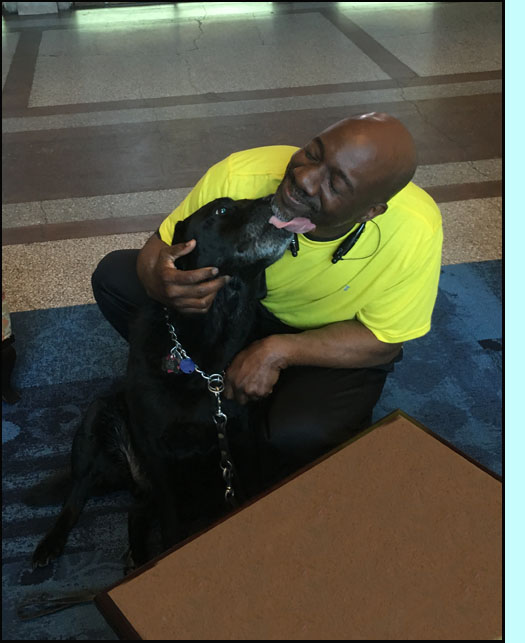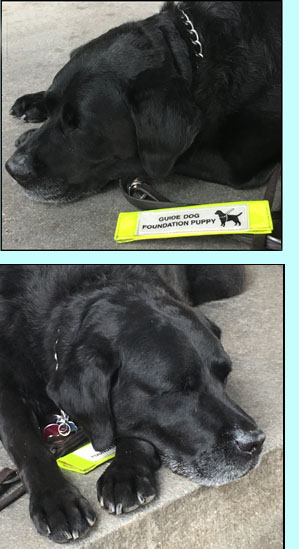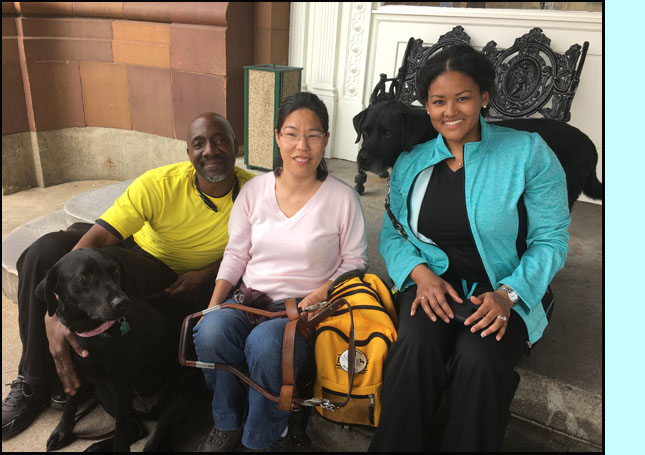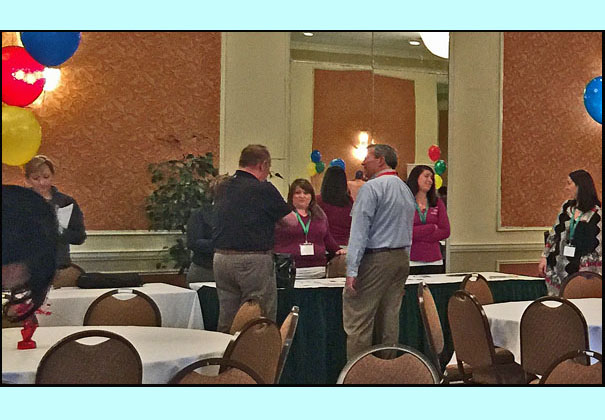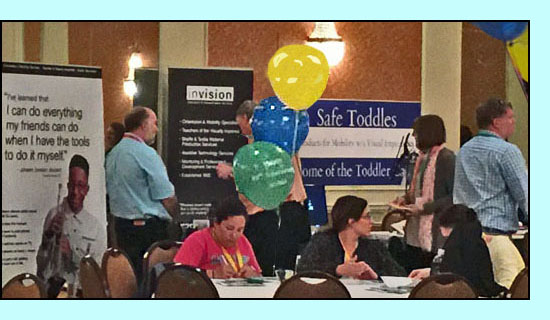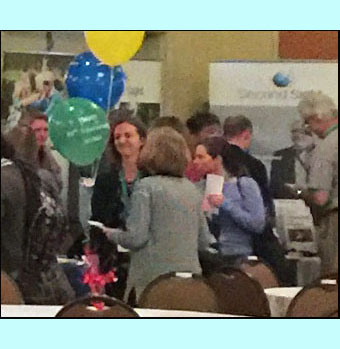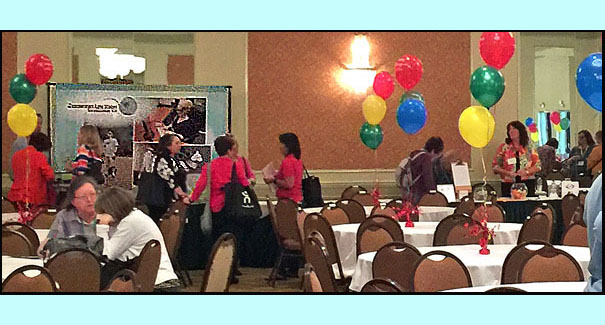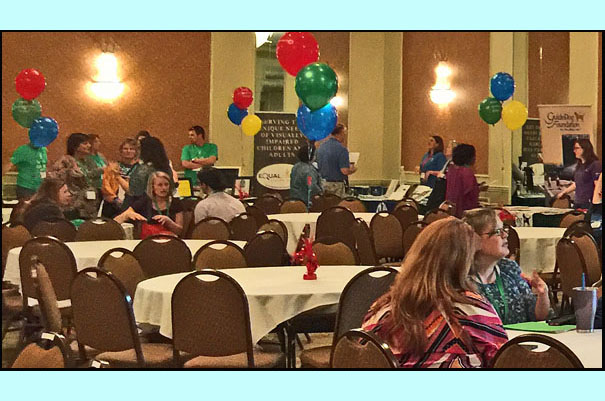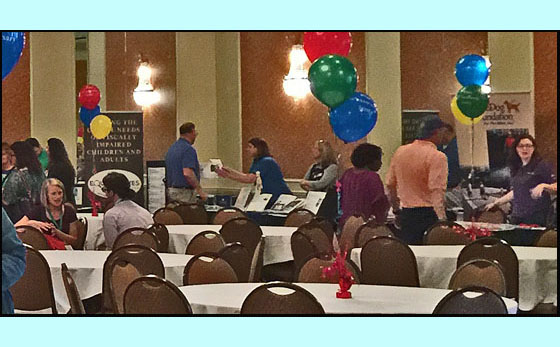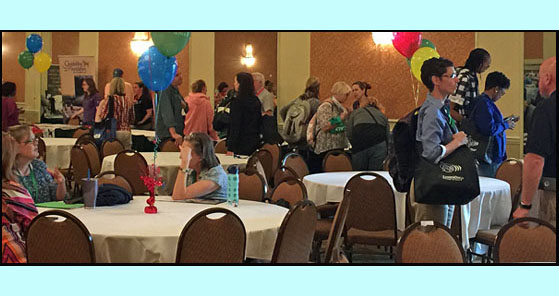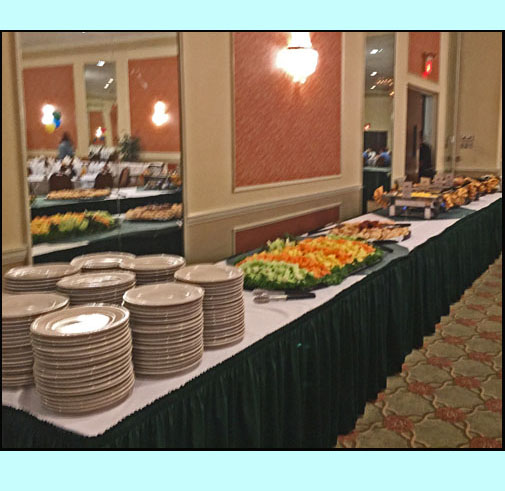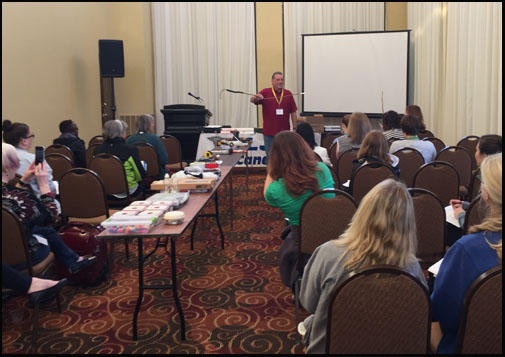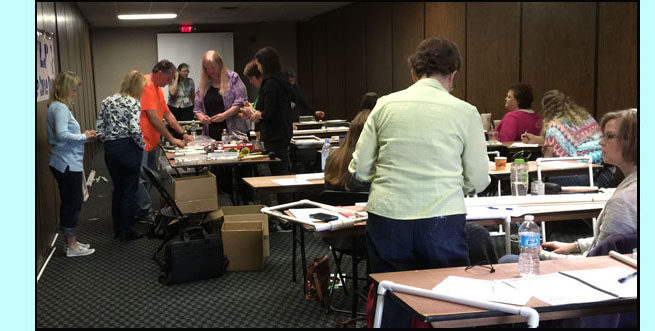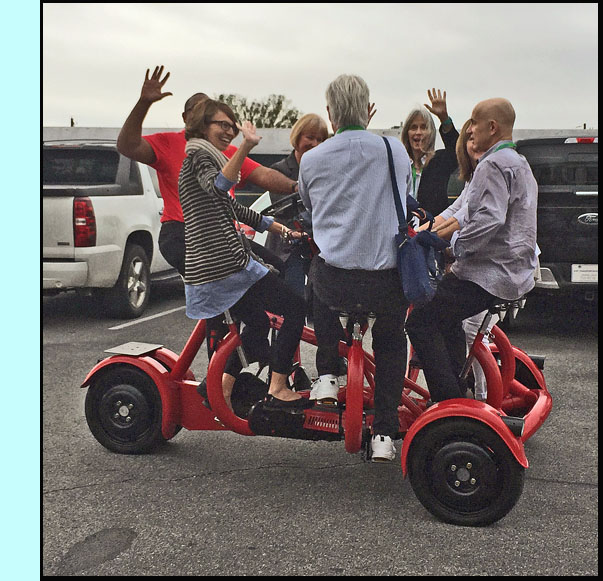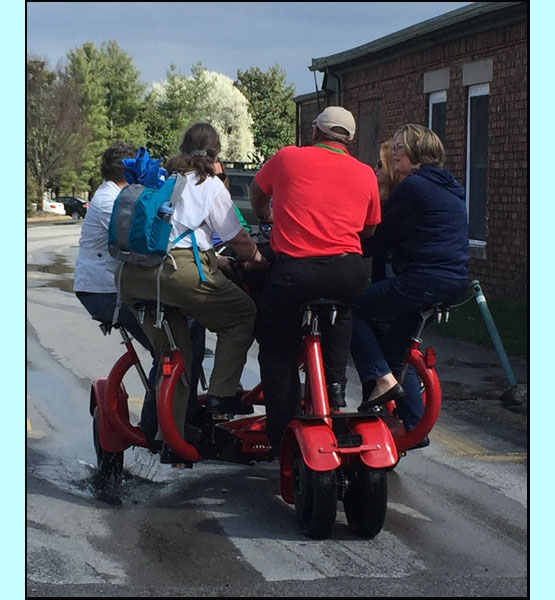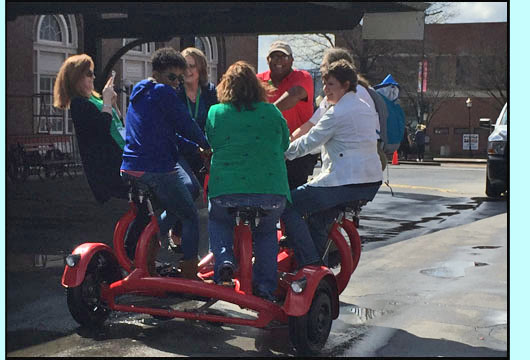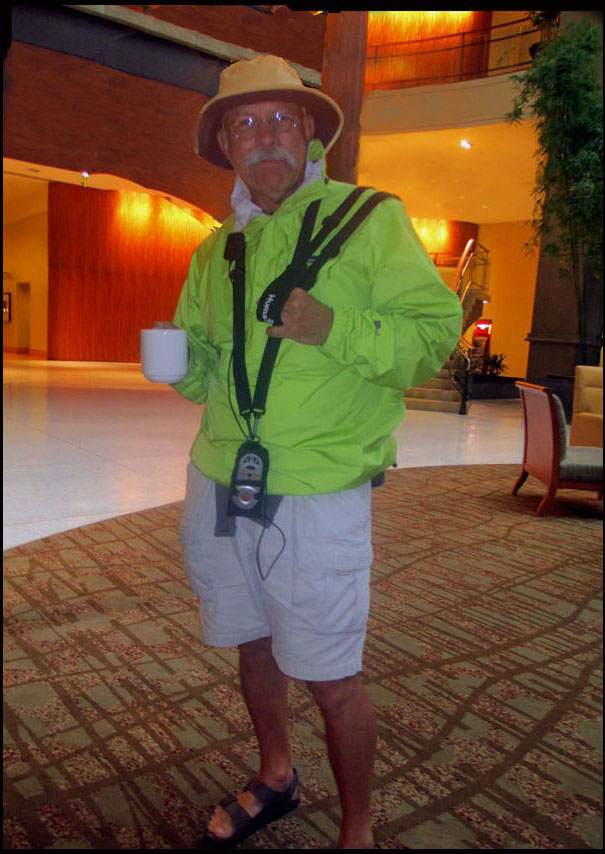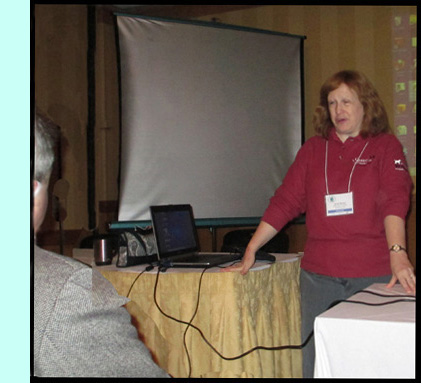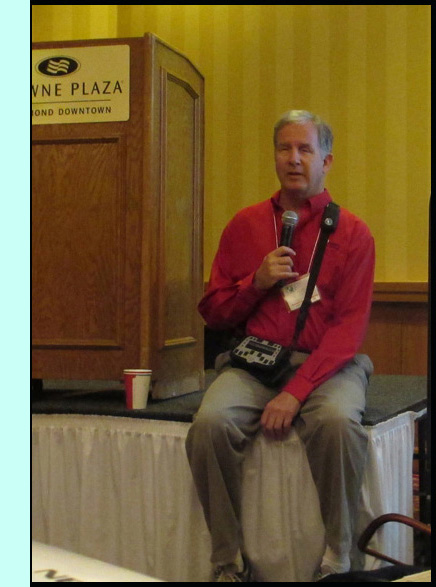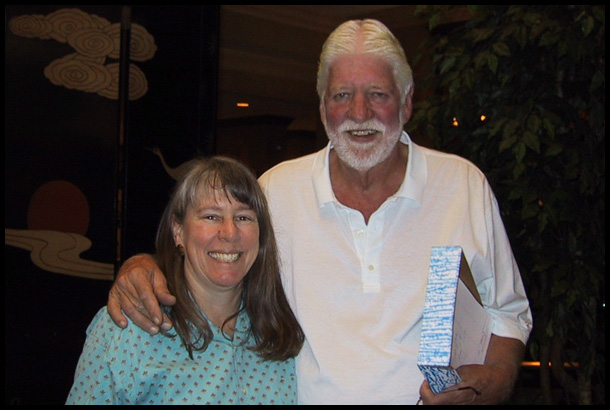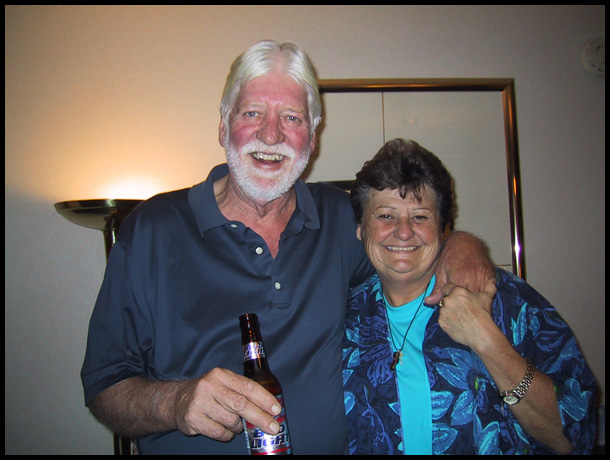In our opening session, Tommy Strasz, Kristy Plesscher and Garret Waldie had us all engaged in creative challenges that we could adapt to use with our students.
[Picture courtesy of Eileen Bischof]

|
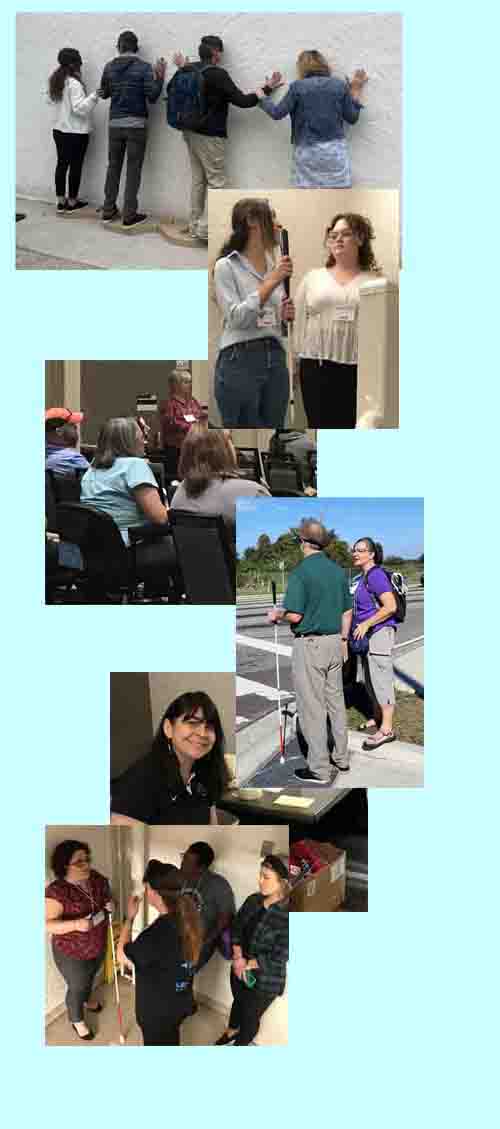
SOMA interactive - Barlow-style!
This conference was dedicated to Janet Barlow in more ways than one. First of all, the Barlow Initiative Committee decided to have their first Janet Barlow Collaboration Initiative here at SOMA (click here to read more about it).And it was Janet who introduced O&M's Feet-on-the-Street sessions to the world here at SOMA, and so to honor her and to celebrate being back in person after so long, most of the sessions were hands-on or interactive, starting with our opening session (pictured above). Participants:
- went into the community to check out beaconing signals for street crossings and detectable surfaces for alignment;
- brainstormed to develop strategies for teaching cane techniques or dealing with failures;
- collaborated with traffic engineers while exploring challenging intersections;
- practiced O&M techniques that are tested during the Florida Cane Quest:
- conducted remote O&M lessons with participants in another room;
- practiced developing skills to assess crossing situations;
- went on a Juno (simulated guide dog) walk;
- went on a scavenger hunt using NFC tags;
- assessed and facilitated proprioception;
- enjoyed an O&M tech smack-down;
- guided folks while blindfolded or
- while walking along a cliff face!
Guiding along a cliff face . . .
-
In Alex Fabrega's session Arizona's O&M: Adventures and Discovery in the heart of the Grand Canyon (first picture below),
participants first watched videos of blind students navigating the Grand Canyon with their intructors (as shown in the second picture below),
and then experienced being guided along a cliff face while blindfolded.
Most participants survived, but 7 fell off the "cliff" -- their fate is still unknown!
(photos of participants courtesy of Nancy Montcalm, photo of Alex courtesy of Eileen Bischof)
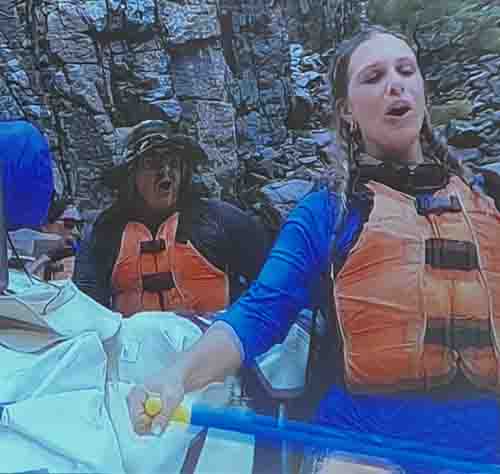
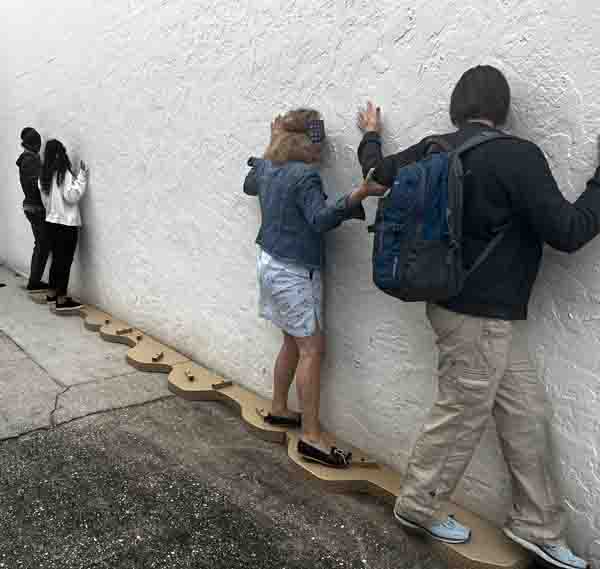
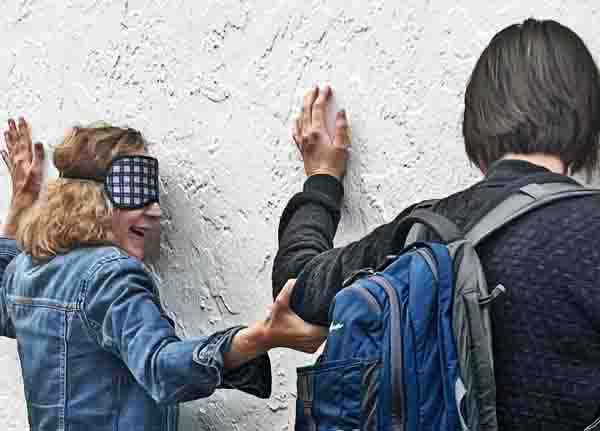
Guiding as a white-cane user . . .
- Elaine Mara, a student in Florida State University's O&M program, and her instructor Erika Fundelius explained Elaine's strategies for guiding people in their session Teaching basic O&M skills in schools as a cane user. In the pictures below, Elaine's cane arc is wide enough to cover the path of the person she is guiding. (photos courtesy of Dona Sauerburger}
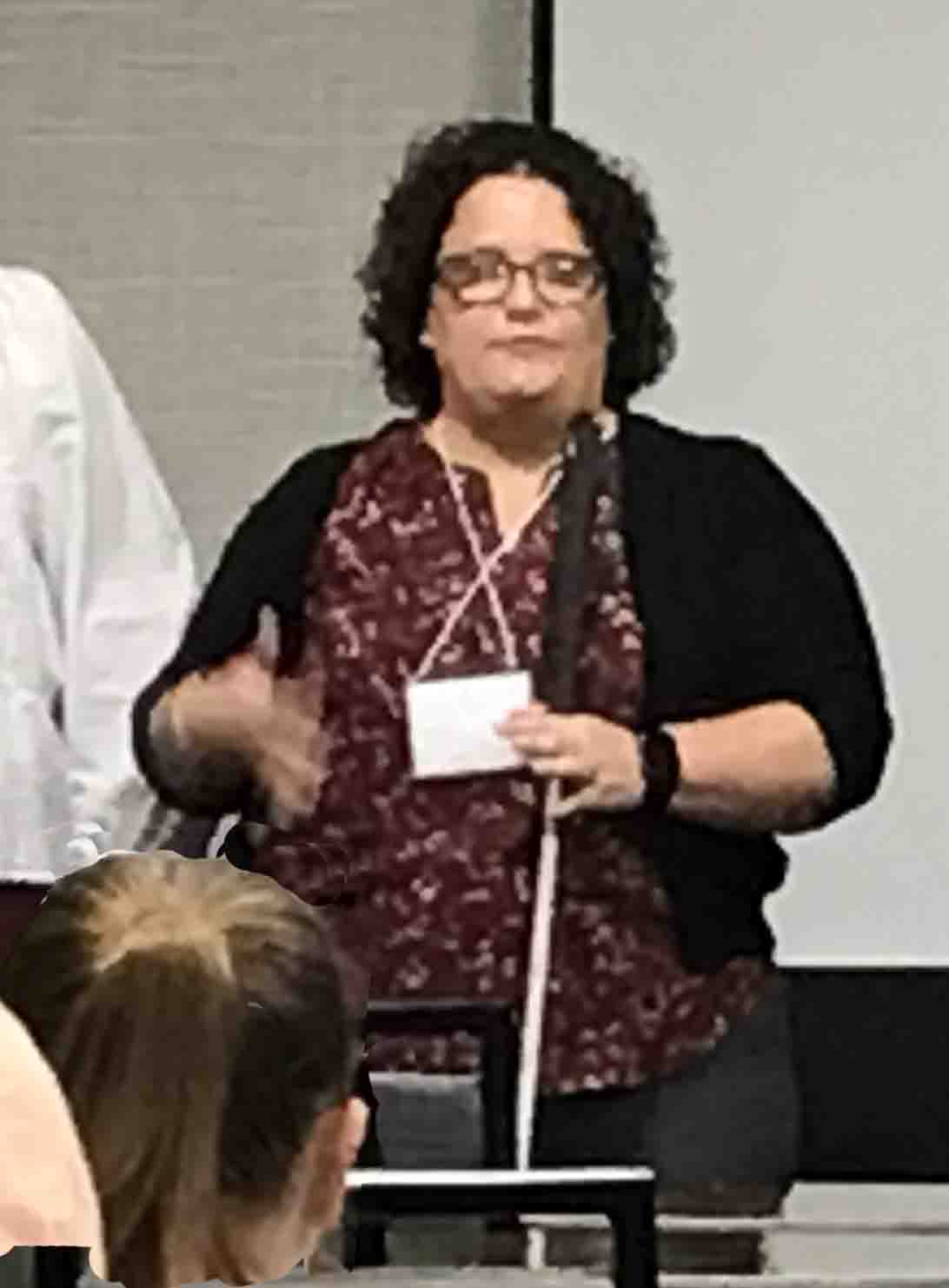
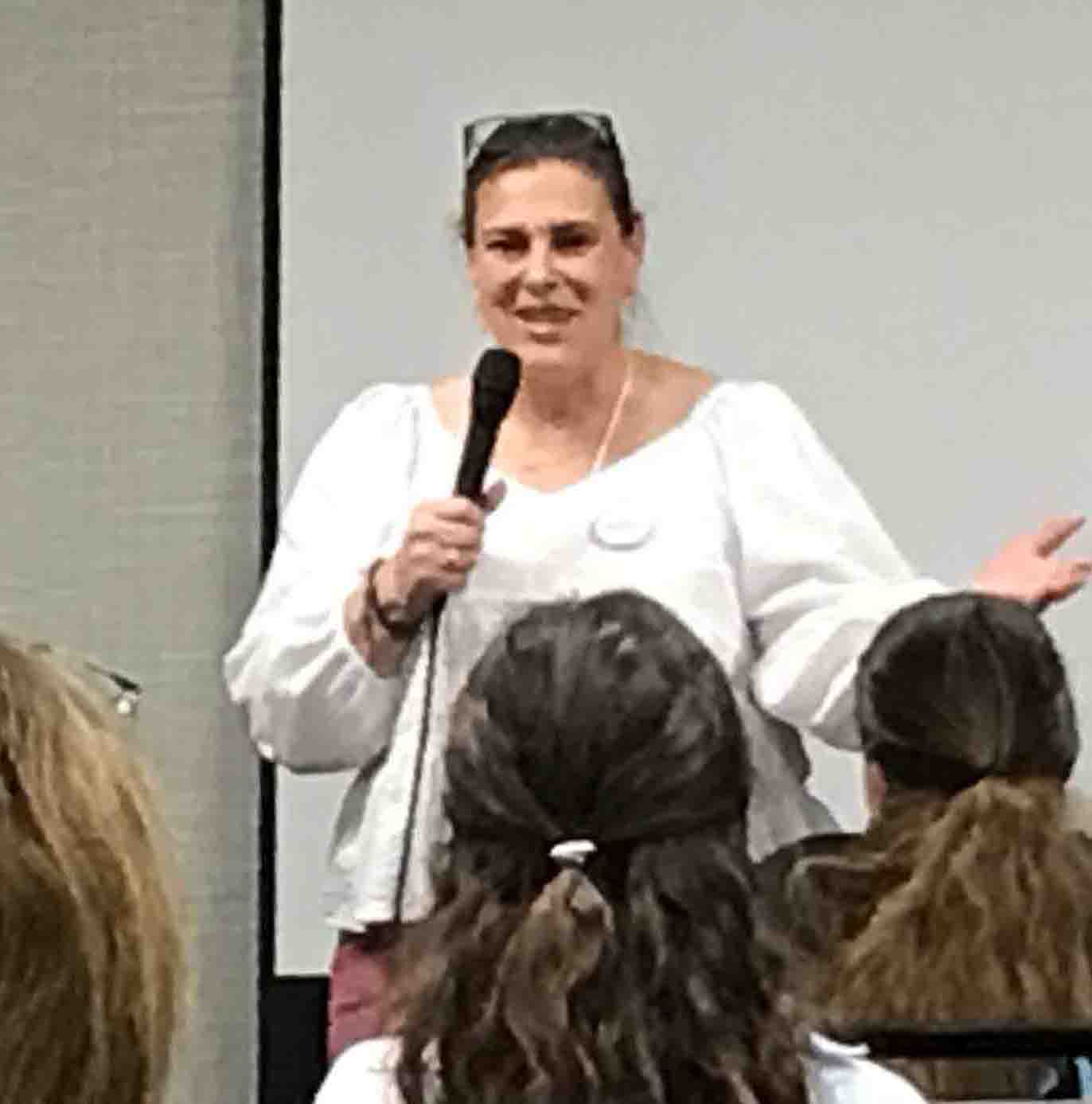
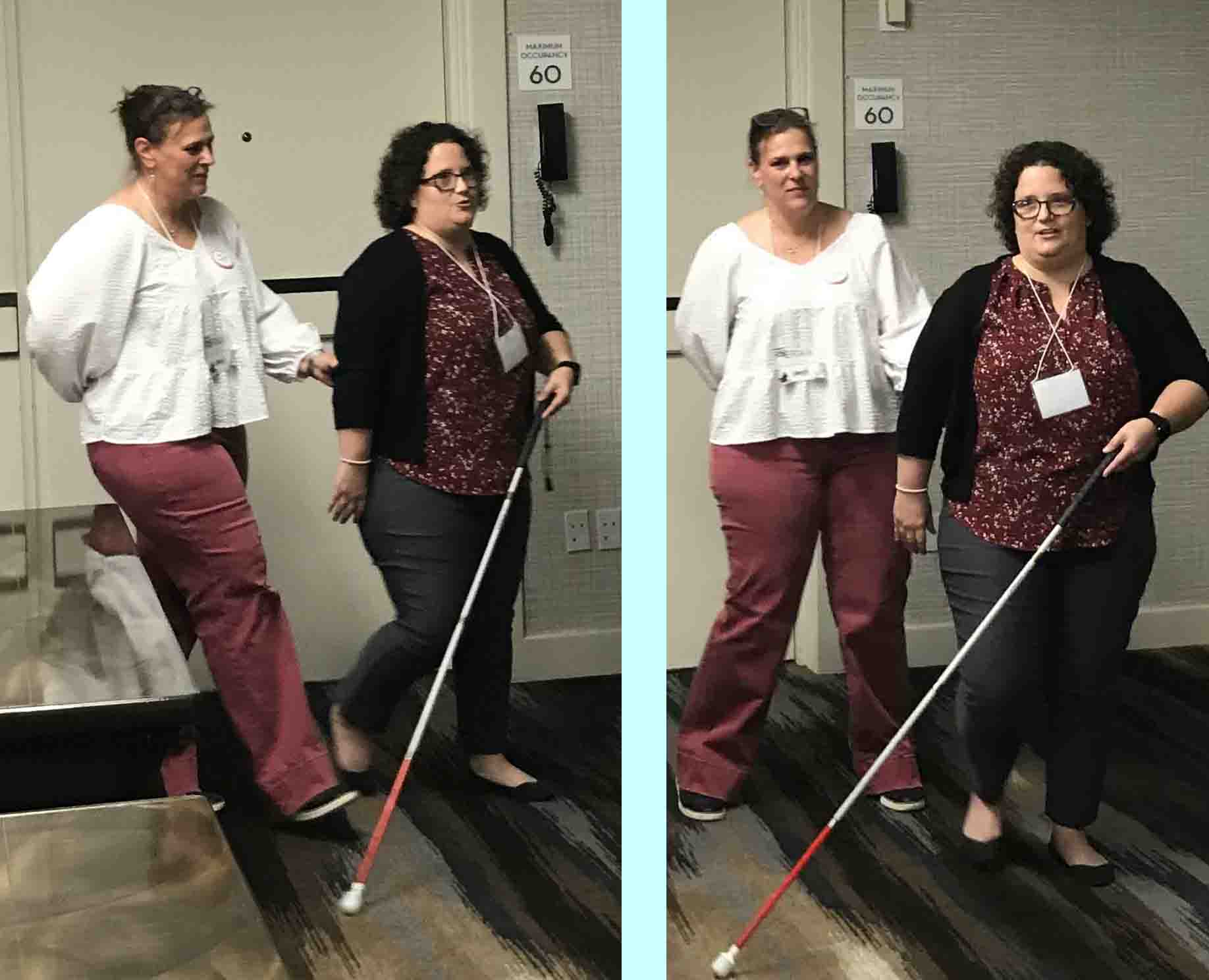
(below, left) Elaine demonstrates approaching a stairway while guilding someone, and maneuvering so that both of them are holding the rail. (below, middle) Ashley Pace uses the strategy for guiding Justin Cooper down the stairs while blindfolded. (below, right) Erika and Marco DeSantiago figure out guiding techniques.
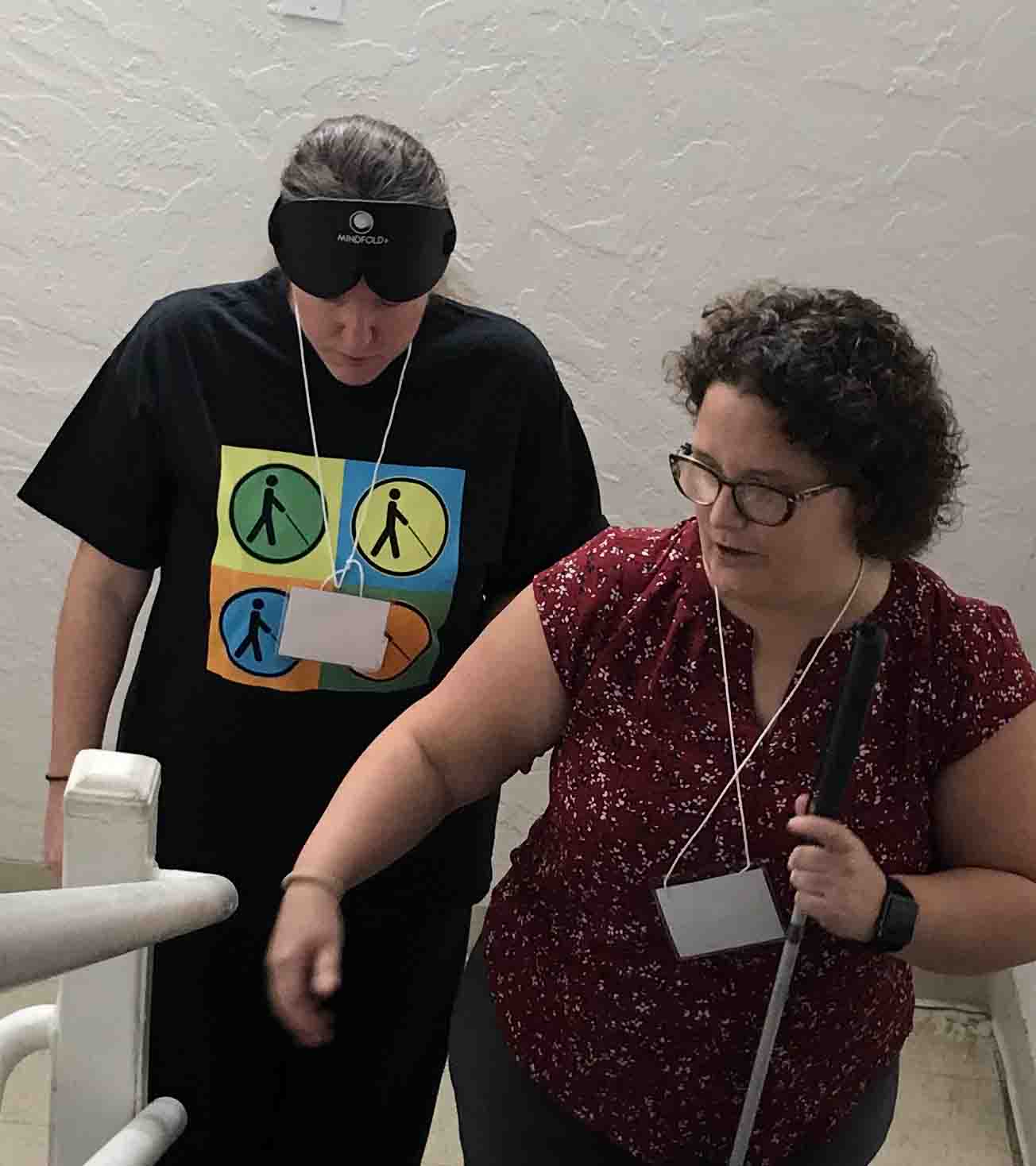
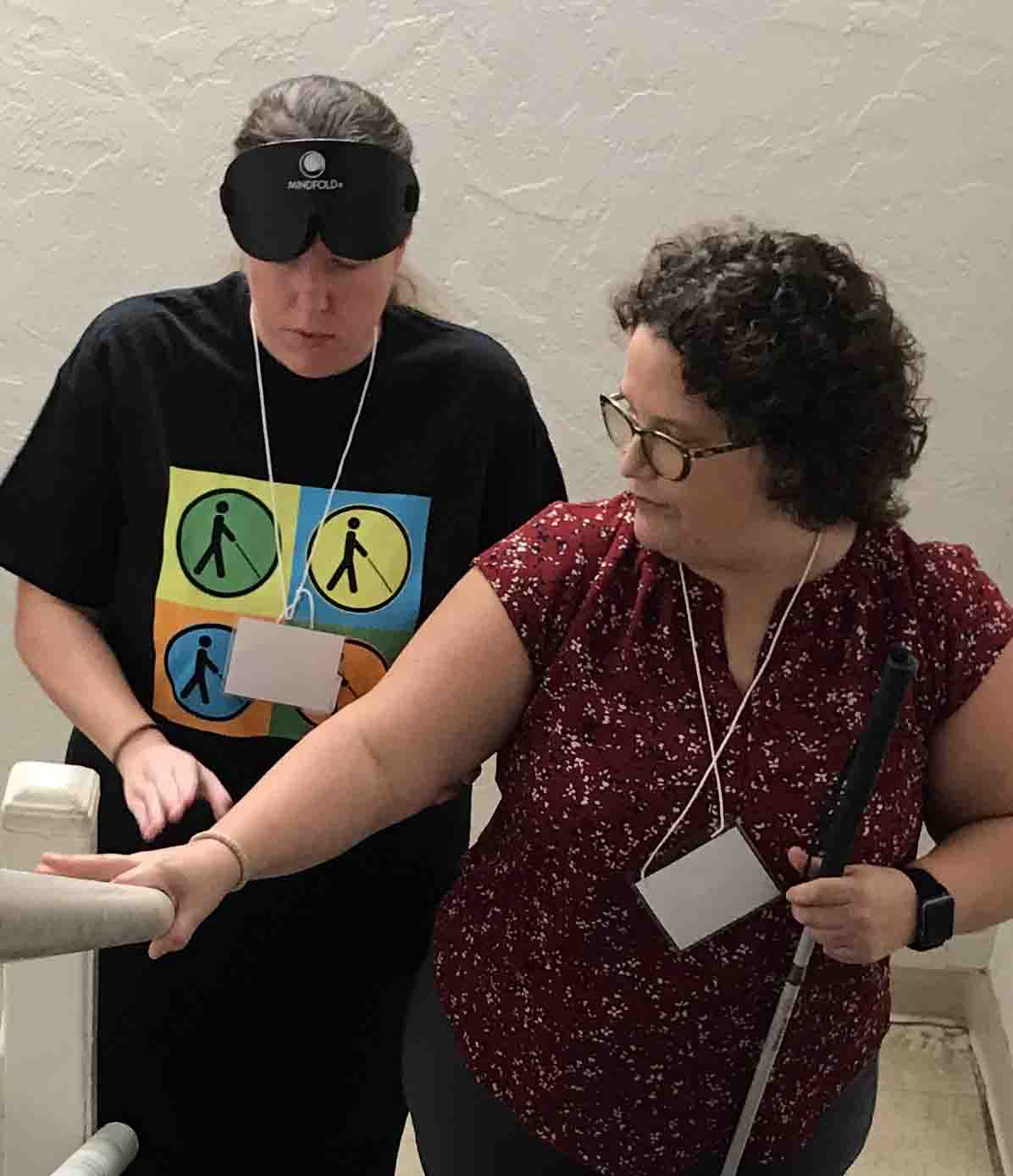
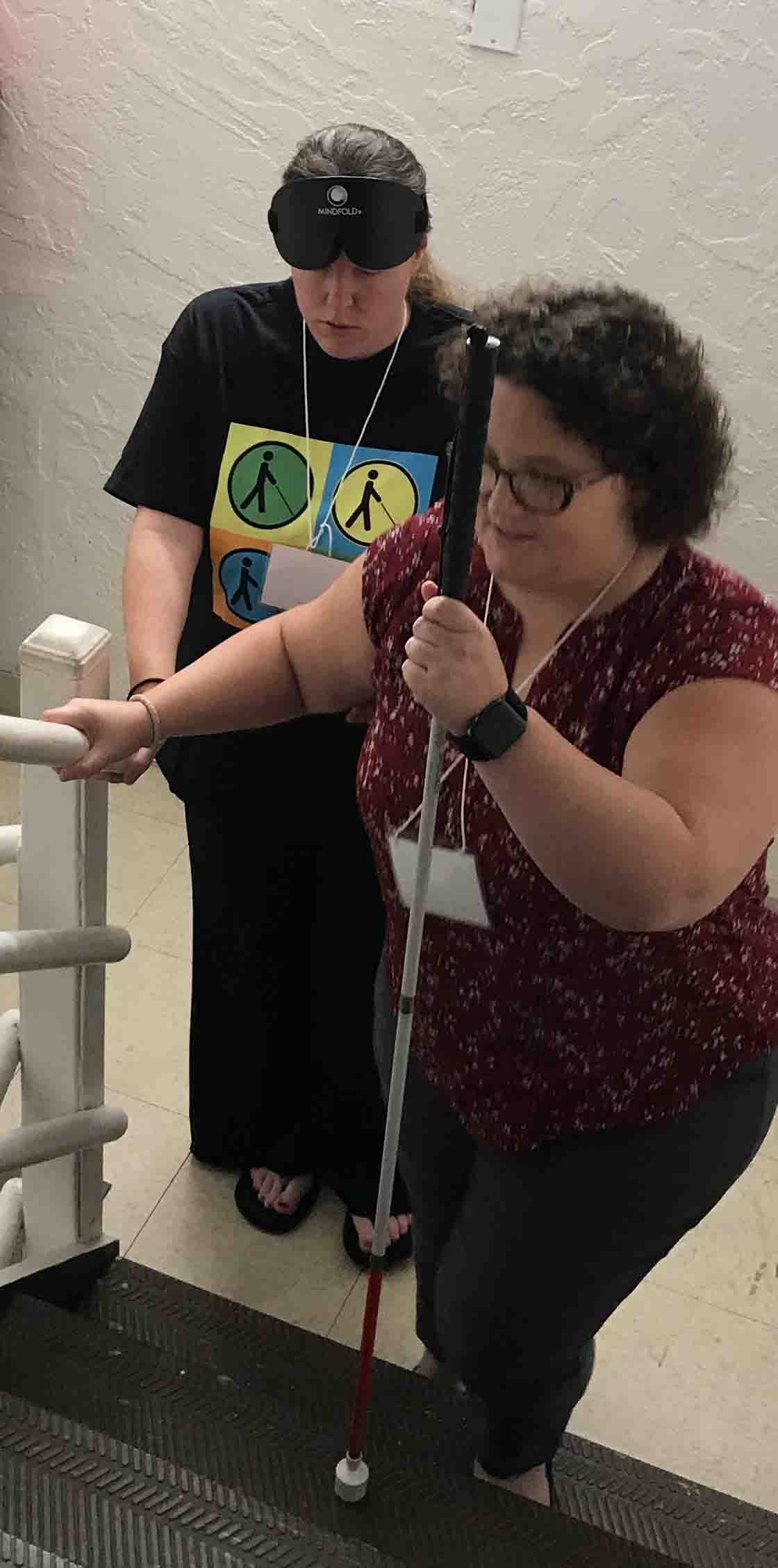
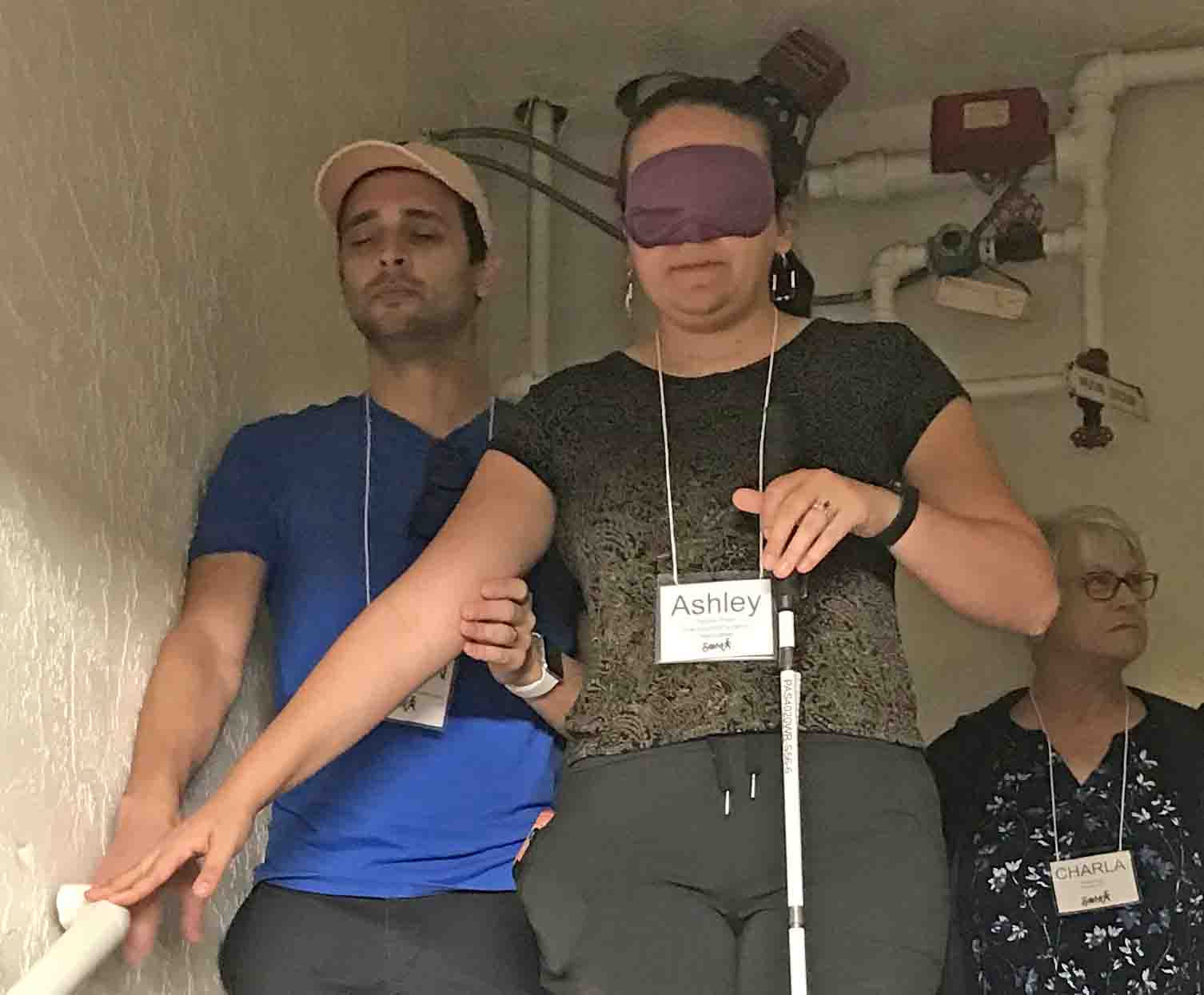
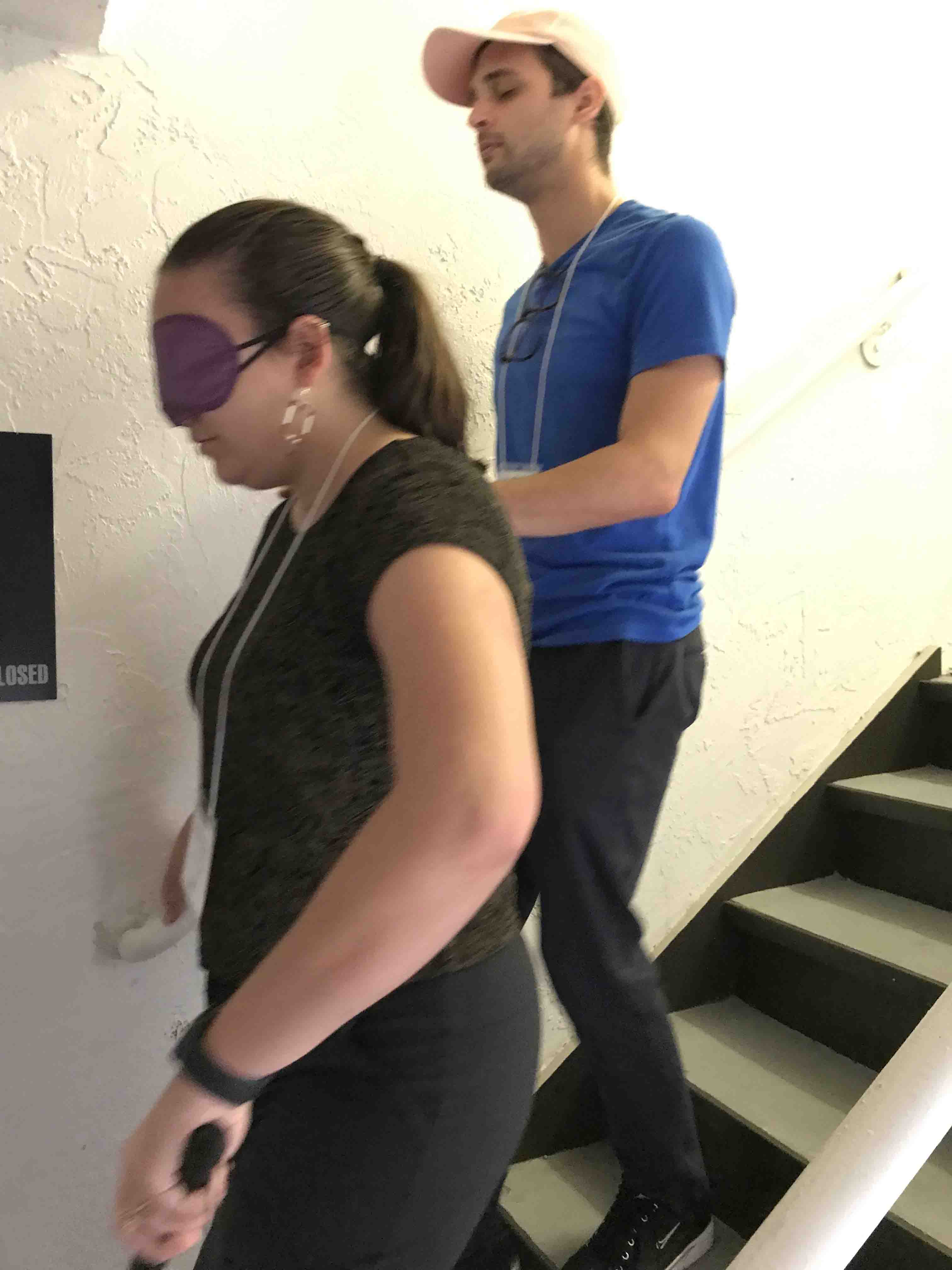
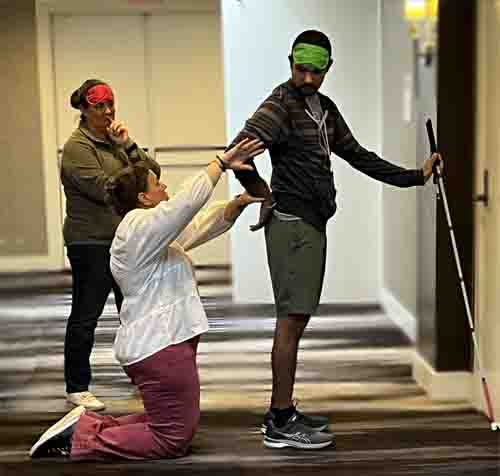
Florida Cane Quest Challenge
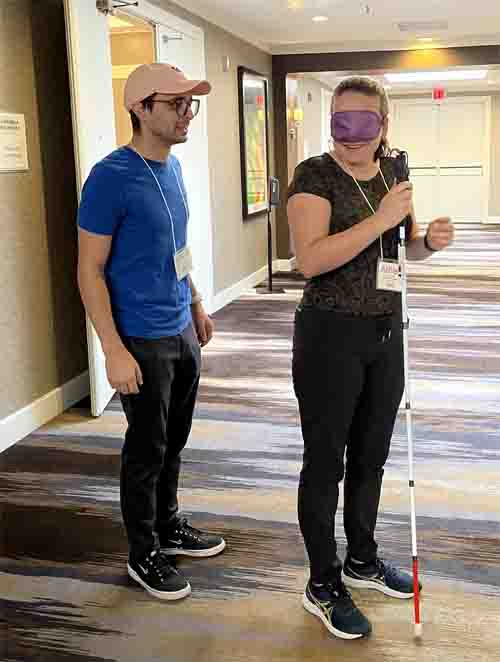
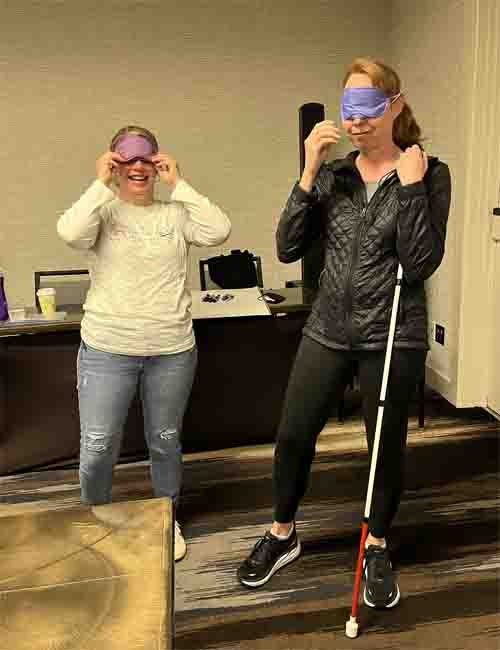
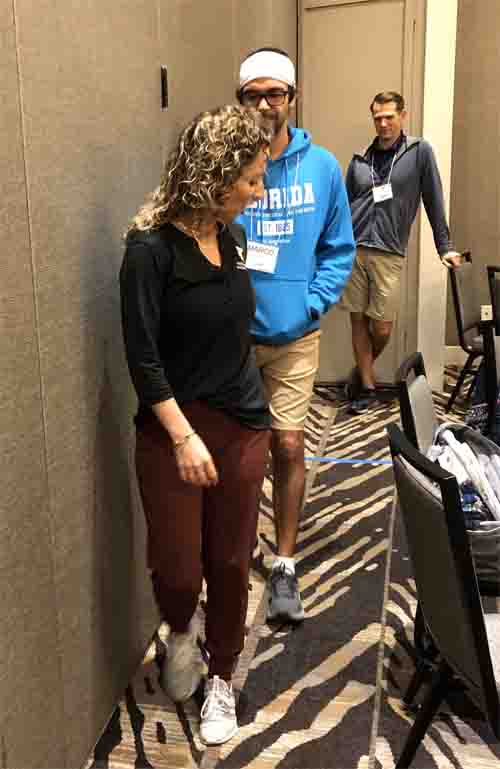
Participants practice O&M techniques that are tested in the Cane Quest Challenge [photos courtesy of Eileen Bischof]. Left to right: Ashley Pace and Justin Cooper; Elizabeth Wilson and Amy Hess; Marco DeSantiago, Cristina Sapp, and Timothy Puch
Proprioception Facilitation and Juno Walk
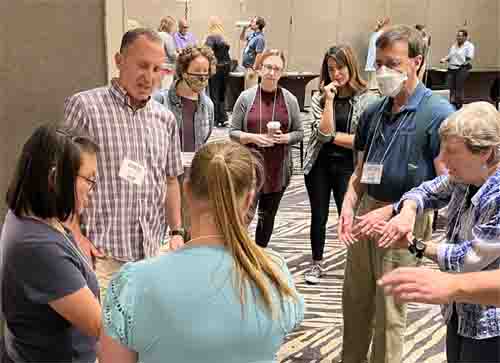
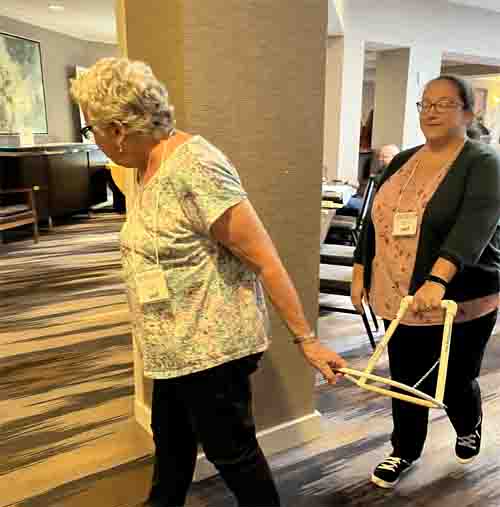
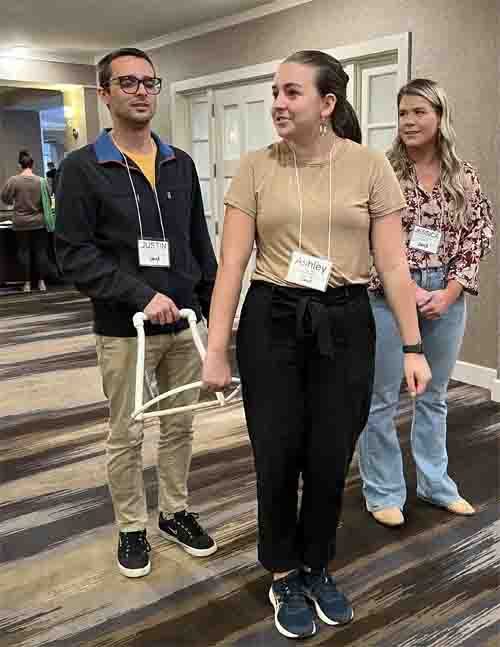
First picture above: Dona Sauerburger leads a small group in Dr. Sandra Rosen's all-day workshop Assessing and addressing proprioceptive deficiencies to improve O&M skills.
Next two pictures above: From left to right, Angela Freniere and Rosemary Gribbin, Justin Cooper, Ashley Pace and Jessica Wheatley guide each other using a modified dog harness ("Juno walk") to assess/teach skills needed for using a guide dog.
Connections and memories (Captions below)
- Andrea Wallace and Cheri Hart
- Ashley Pace with her mother Eileen Bischof
- Dona Sauerburger with Kay Jackson, whose wildlife pictures are below
- Eileen Siffermann, Justin Kaiser, Lukas Franck and Kristen Sims at their exhibit of the Orientation and Mobility Specialist Association.
- Mike May shares insights, ideas and information in his session Accessible Indoor Wayfinding Technology (photo courtesy of Nancy Montcalm}
- Lukas Franck takes a break
- Sarah Duyck, Jen Graham and Beezy Bentzen
- Jessica Smith and Ashley Pace
- FSU students Ashley Grguric and Kris Wang
- (picture to the right) FSU graduates and students
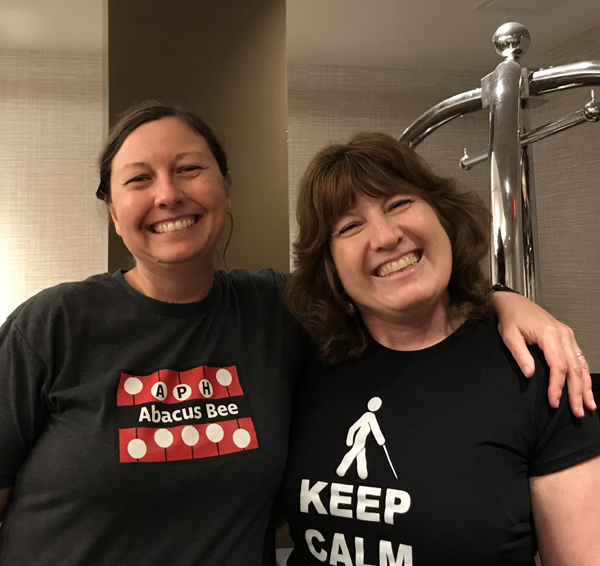
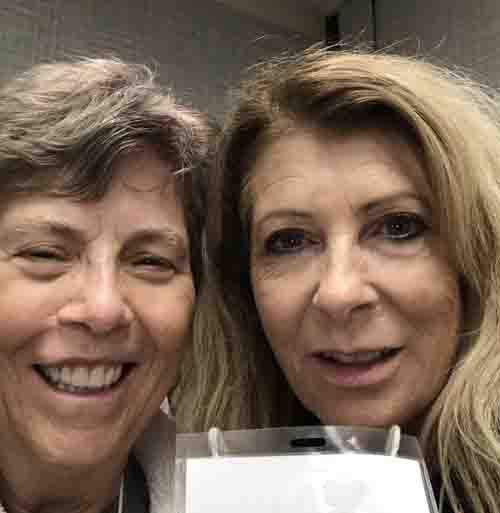
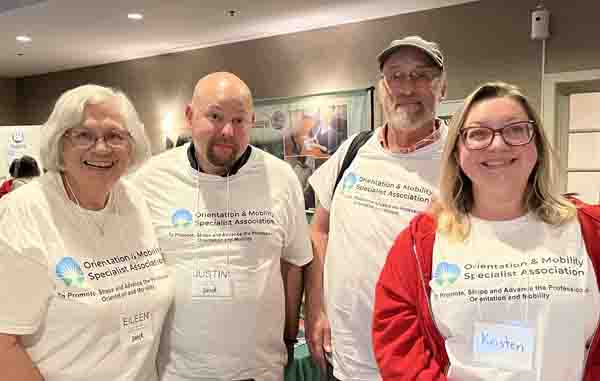
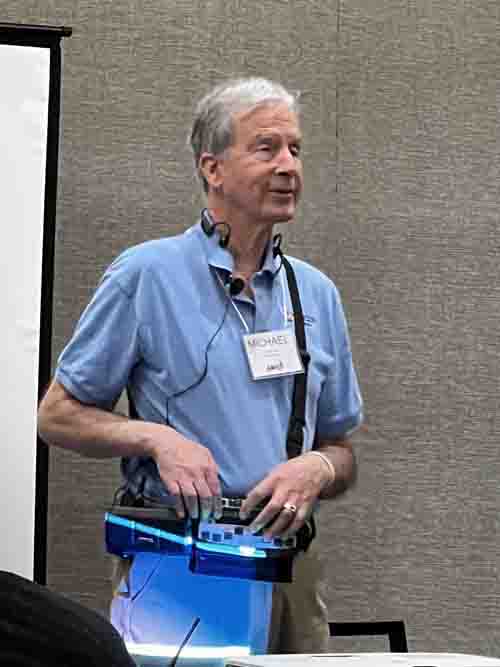
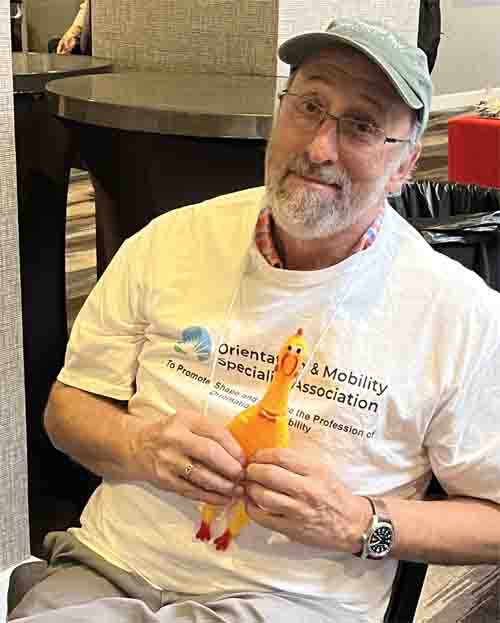
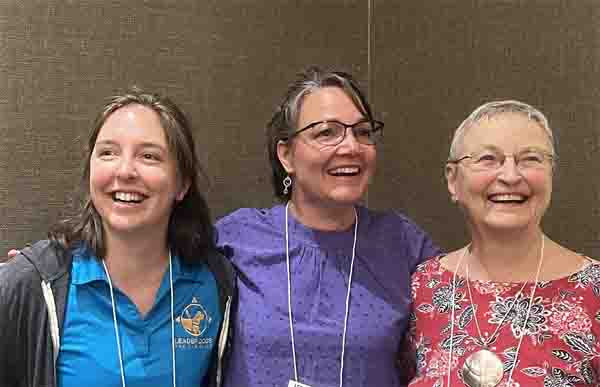
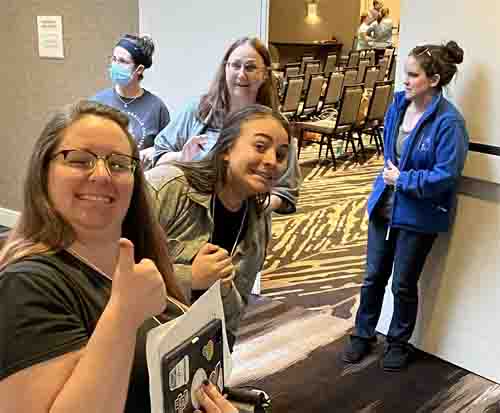
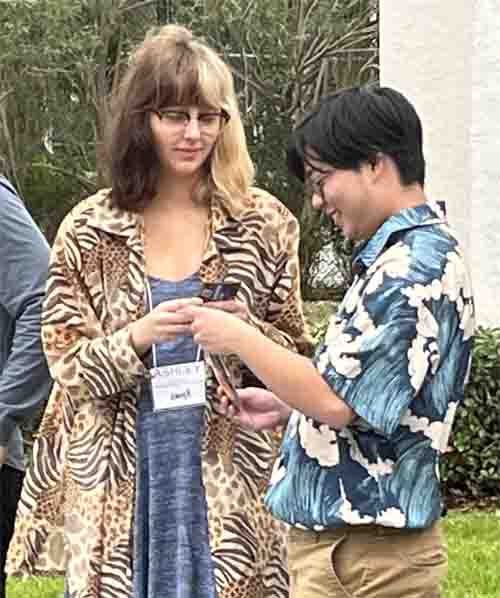
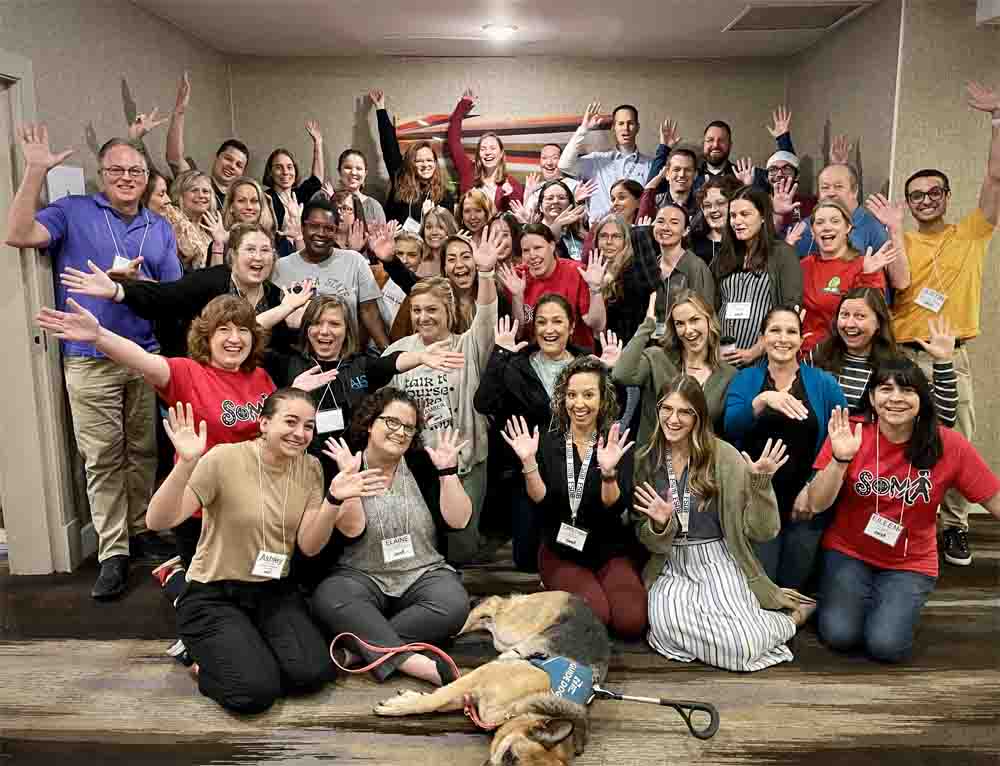
|
Pictures above (from top left to bottom right) - photos courtesy of Eileen Bischof unless otherwise indicated
Feet in the Street - let's keep it straight!
- The team that organized the all-day Janet Barlow Collaboration Initiative with traffic engineers and O&M specialists (O&Ms) the last day of SOMA (see below) installed several innovative high- and low-tech devices to assist blind travelers in alignment for crossing streets.
SOMA participants were able to experience these installations blindfolded during several Feet-in-the-Street sessions as well as during breaks or evenings - Janet Barlow would have been so pleased!
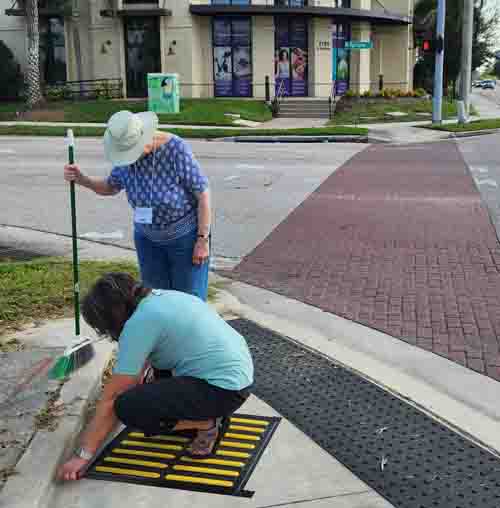
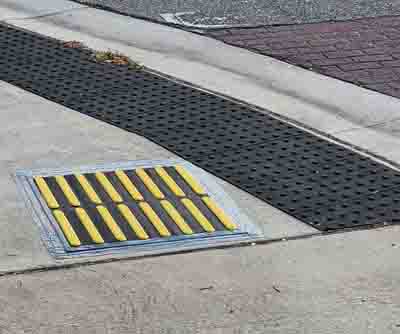
|
In the pictures to the left, Beezy Bentzen, COMS and Jennifer Graham, COMS installed two temporary 2'x2' raised bar tactile direction indicators at a blended corner, with the bars perpendicular to the line of travel for the two crosswalks. Under blindfold, O&Ms and engineers aligned to cross by squaring off with the raised bars, much like squaring off with a curb.
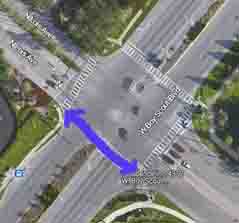
|
A beaconing APS was installed for one crossing of this exceptionally large intersection. A loud locator tone from a loudspeaker at the far end of the crosswalk came on during the pedestrian clearance interval, acting as an audible beacon to help pedestrians who have vision disabilities remain in the crosswalk while making this very long crossing.
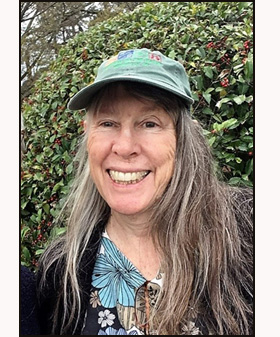
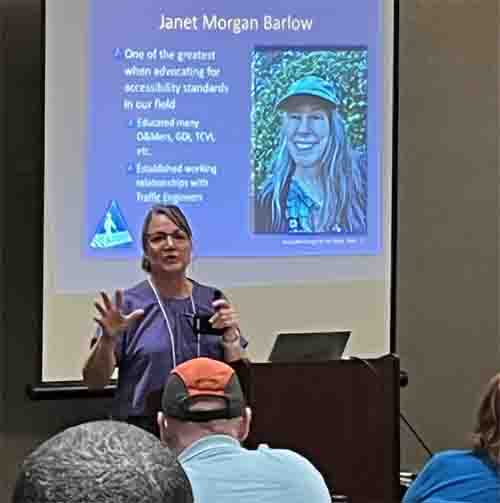

.jpg)
.jpg)
.jpg)
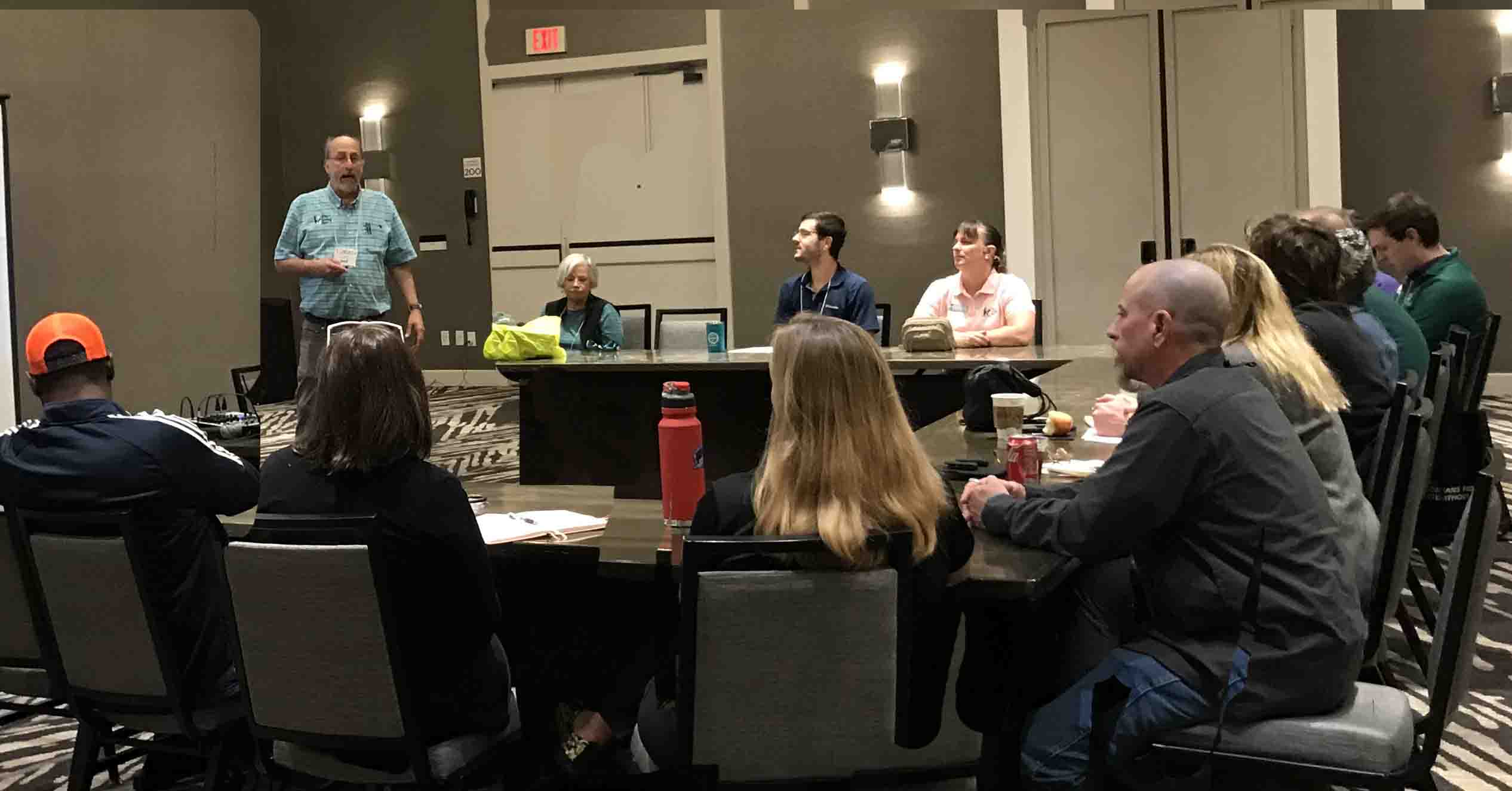
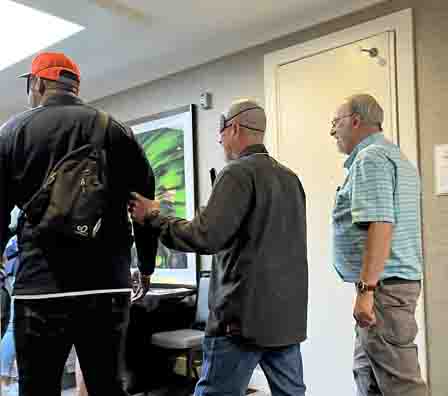
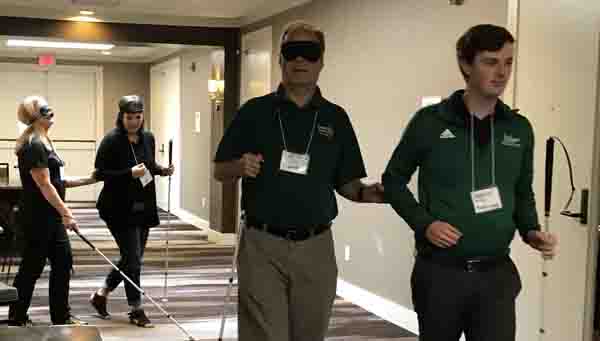
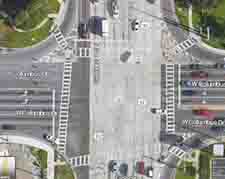
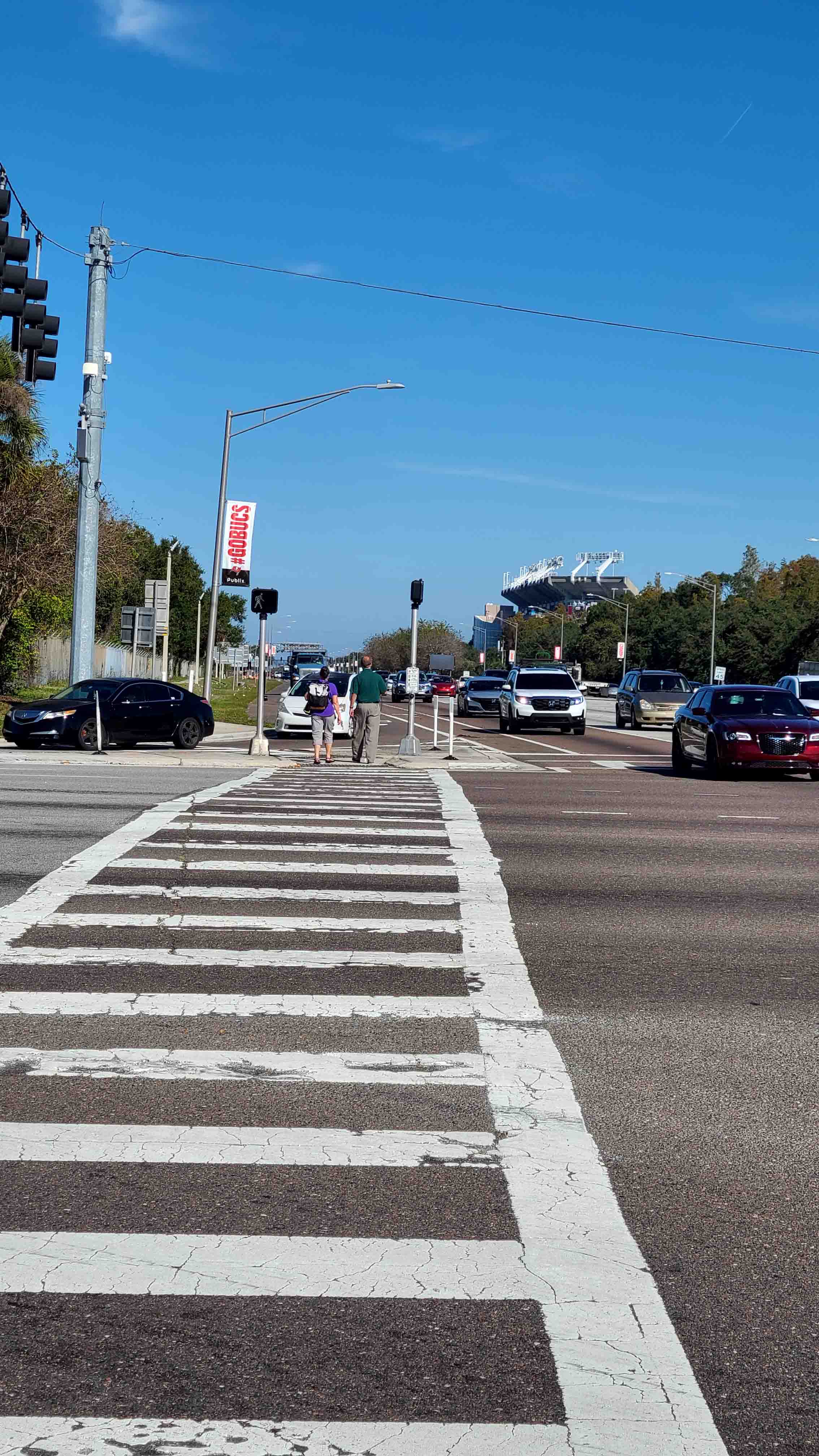
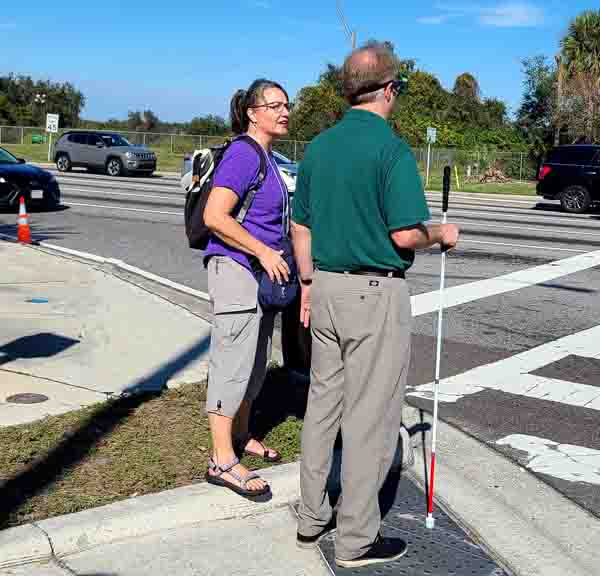
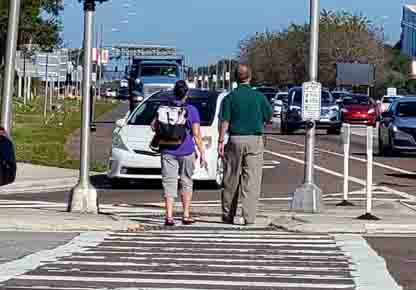
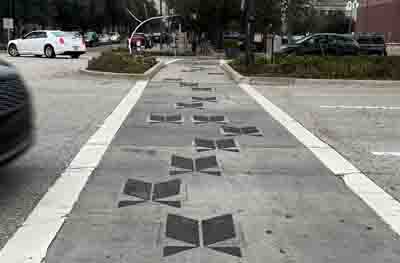
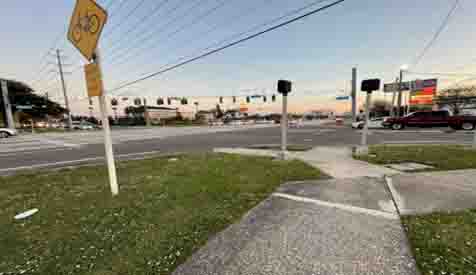
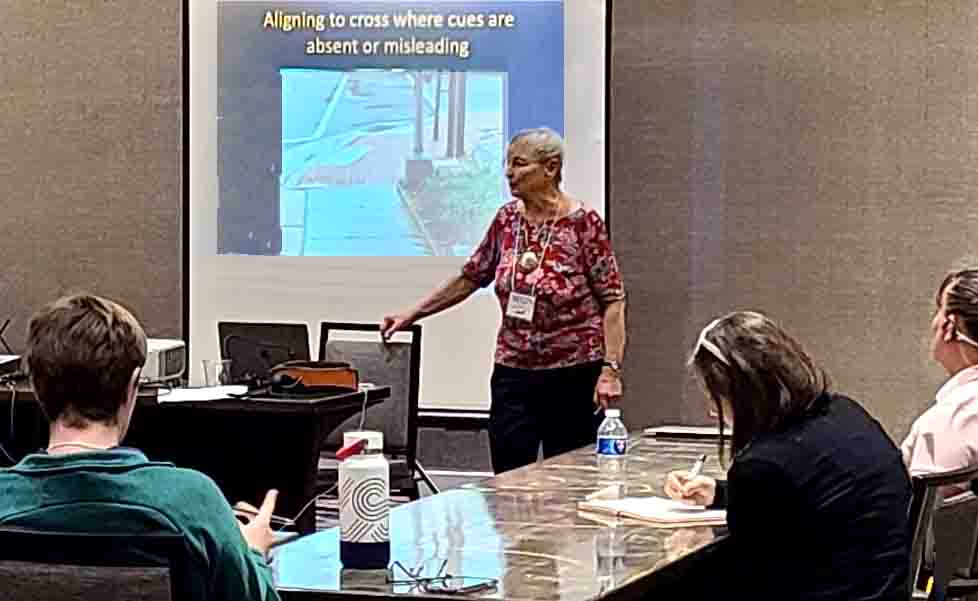
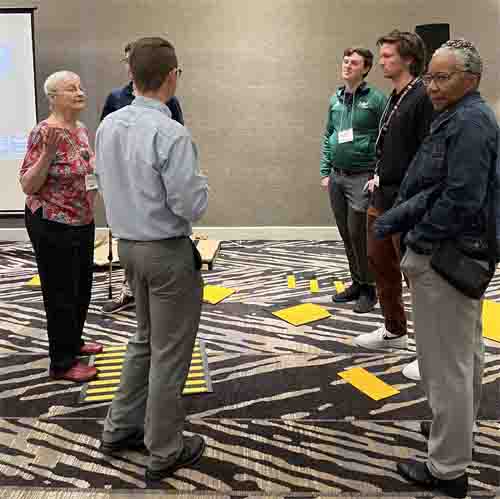
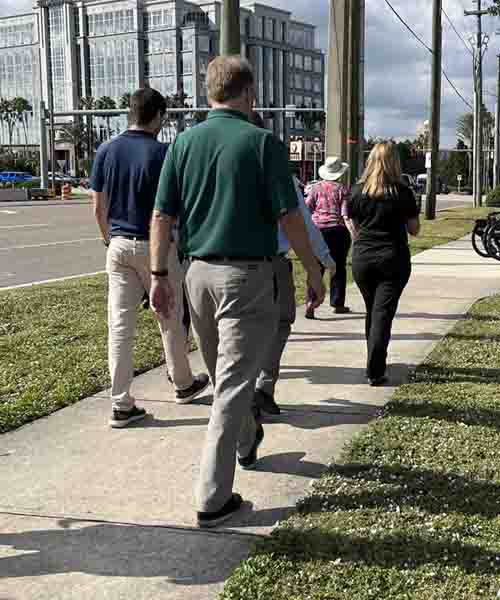
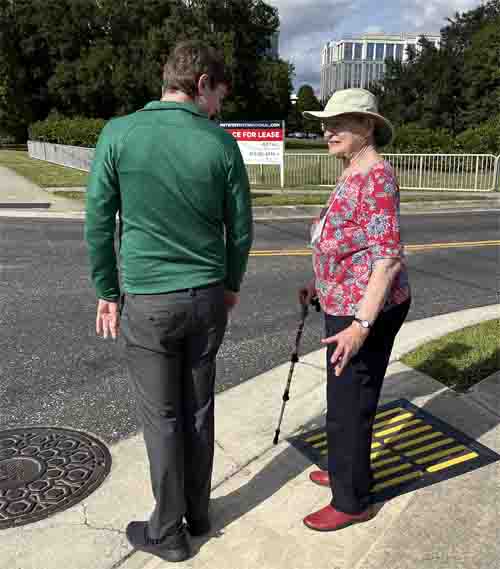
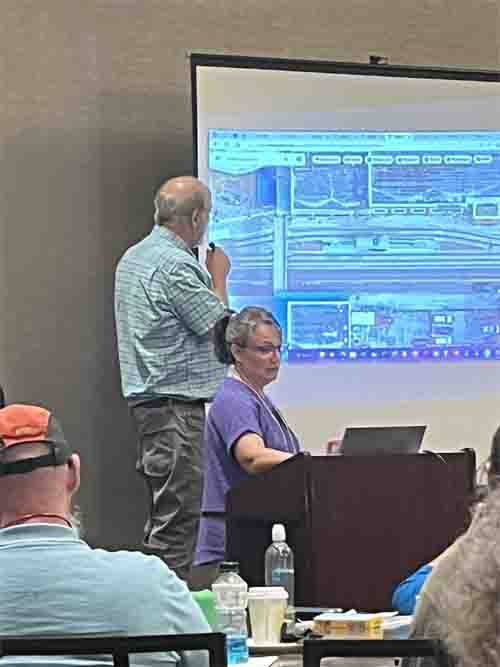

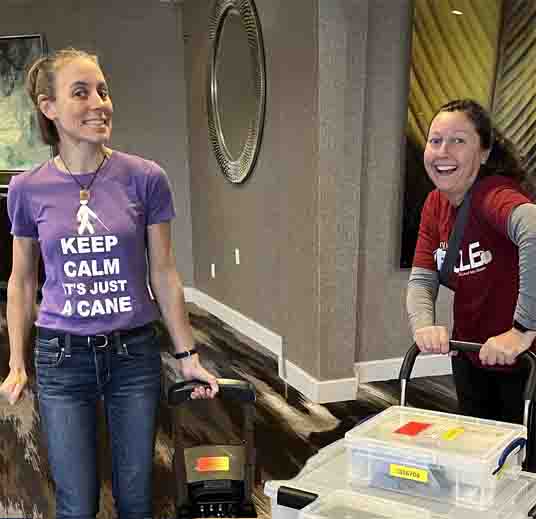
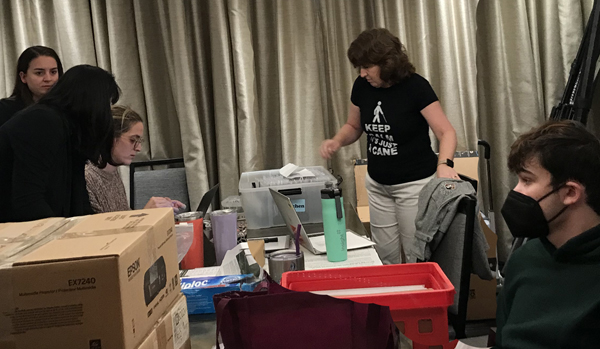
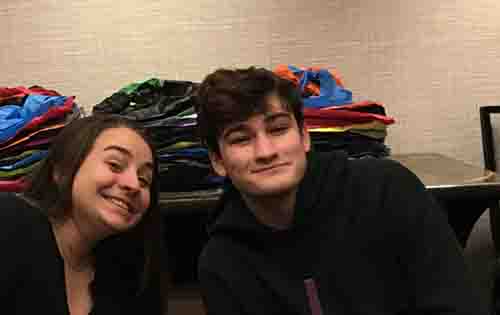

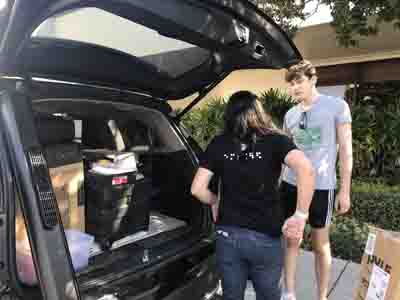
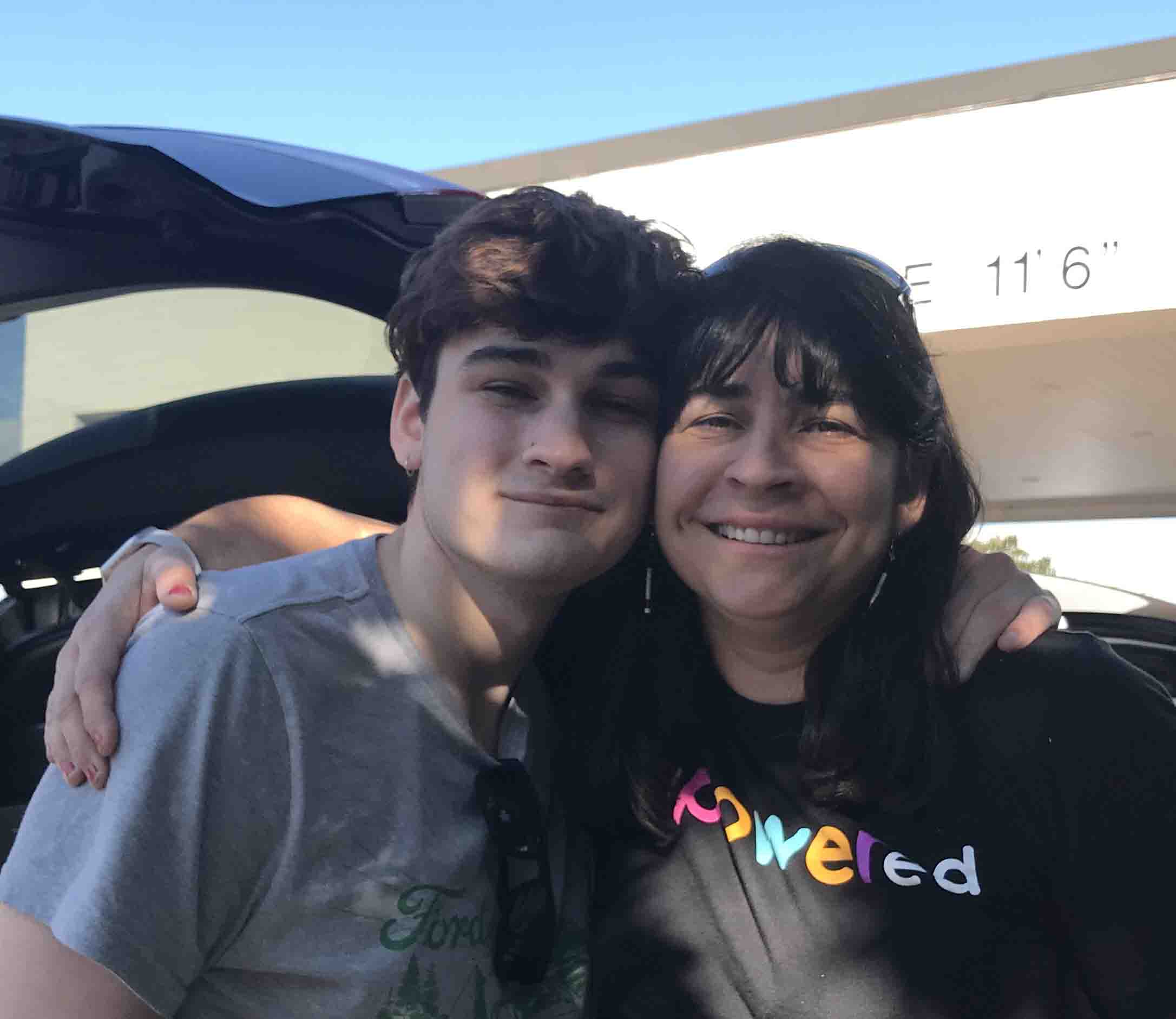

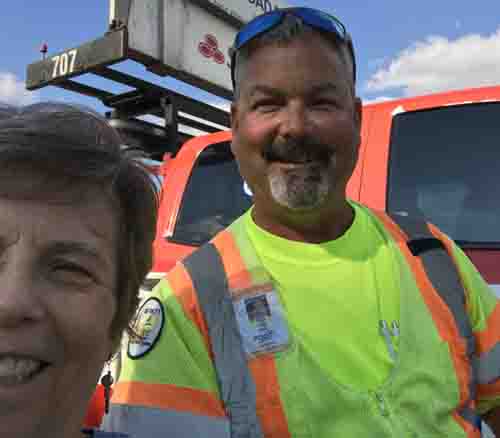
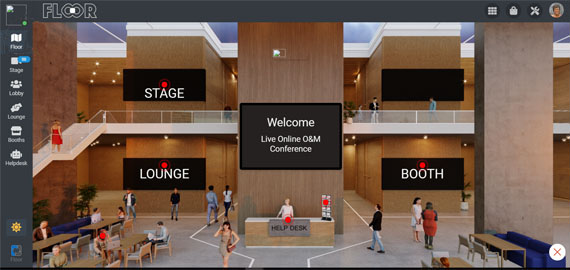
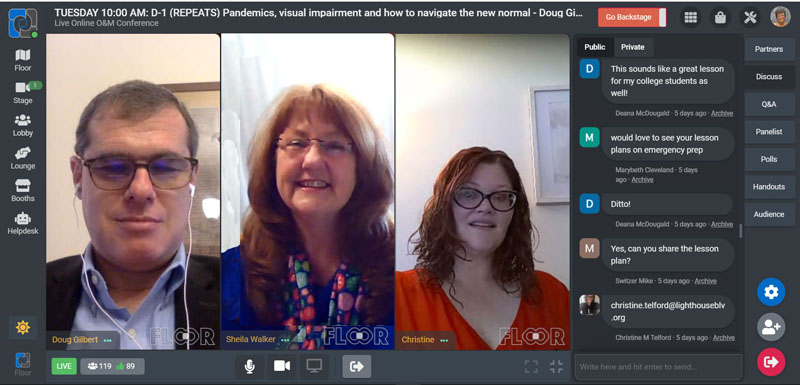
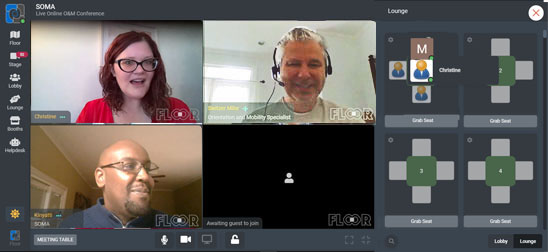
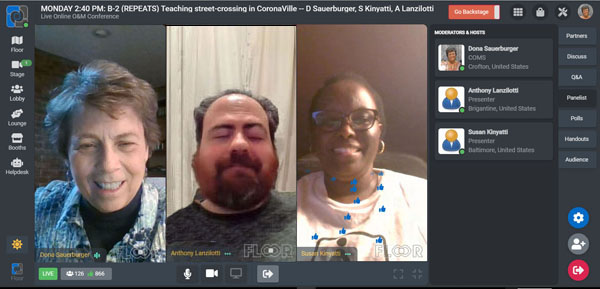
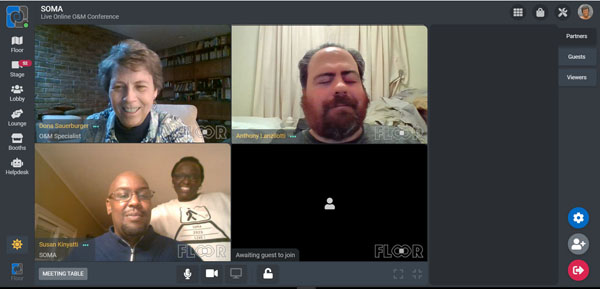

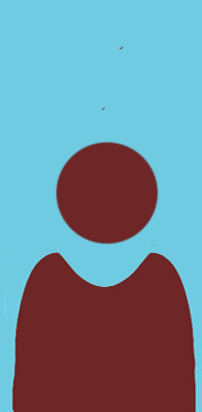
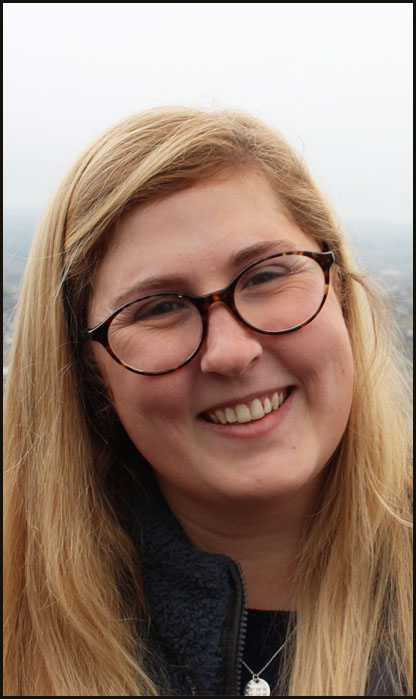
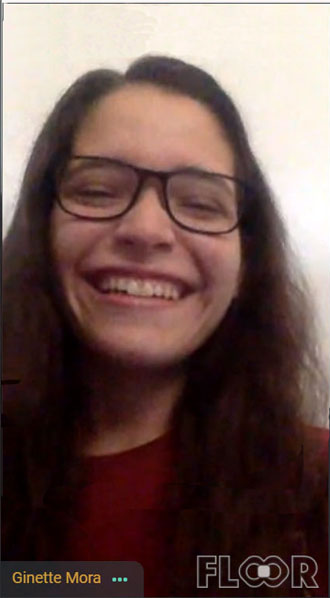
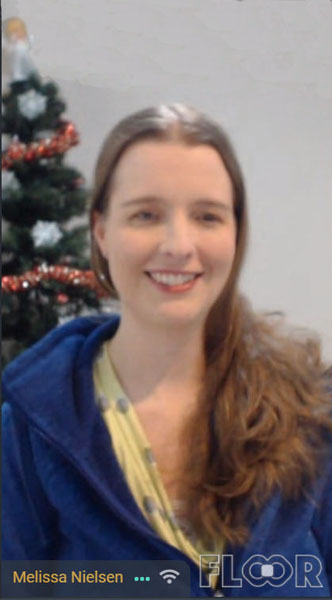
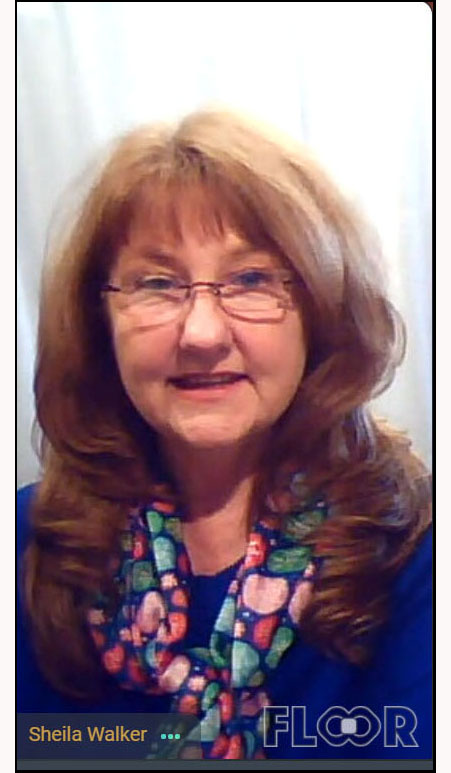
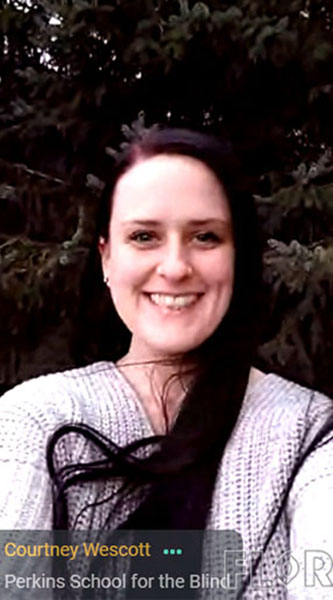

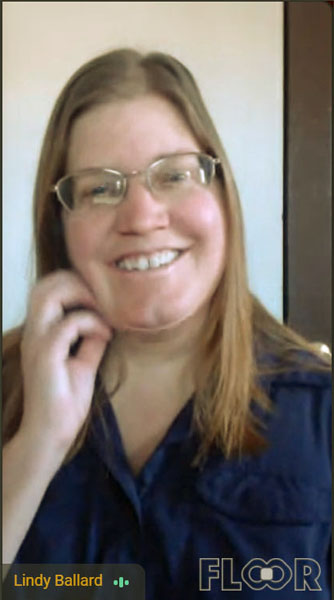



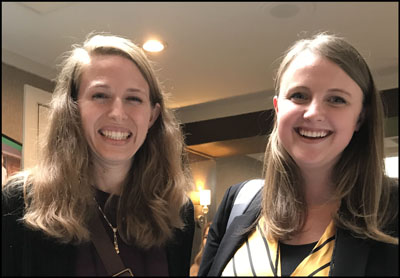
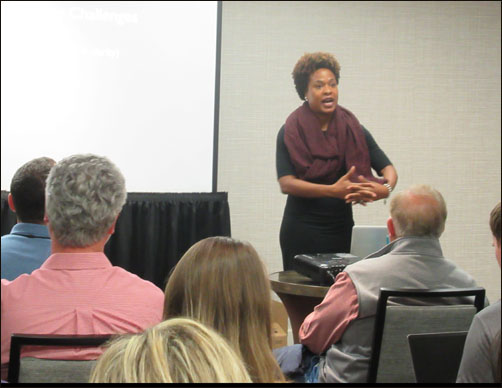
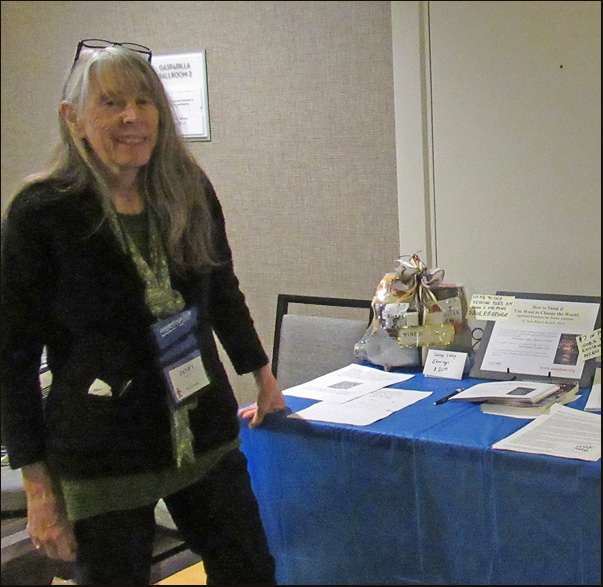
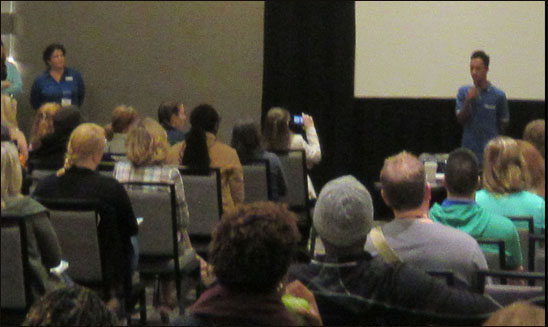
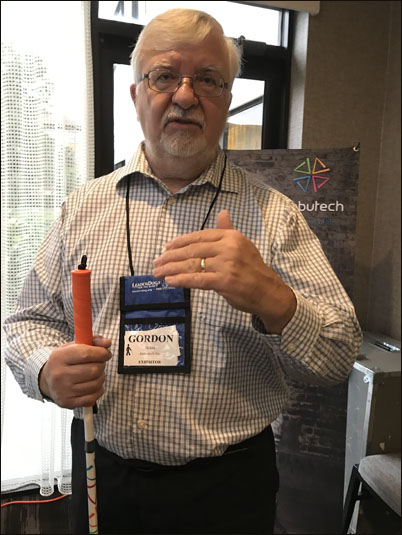
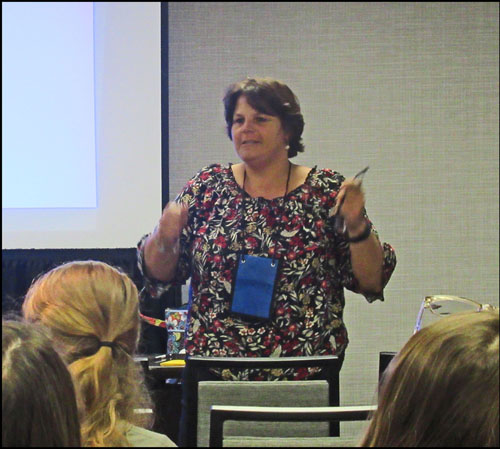
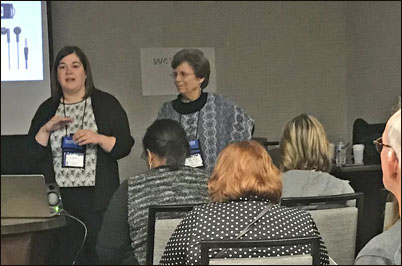
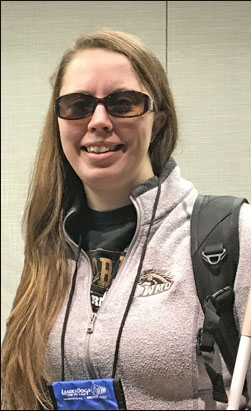
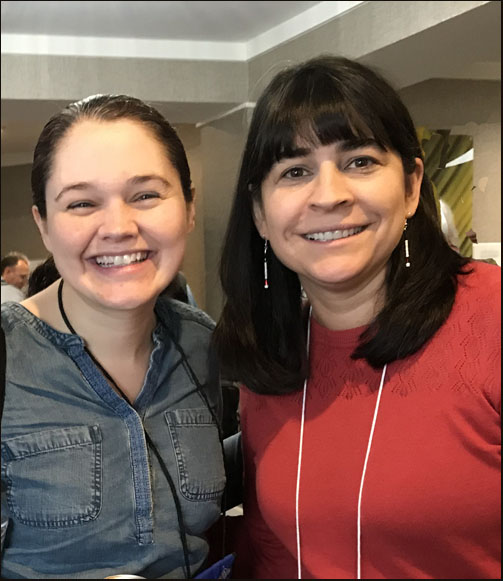
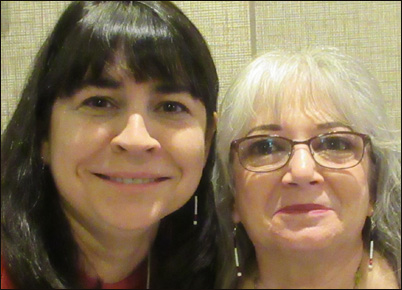
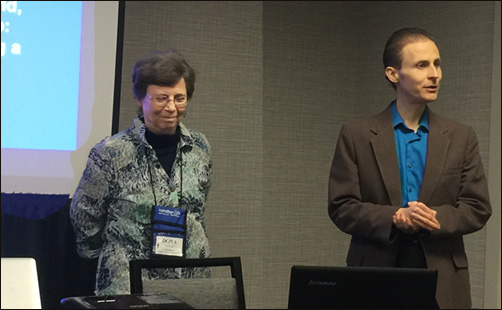
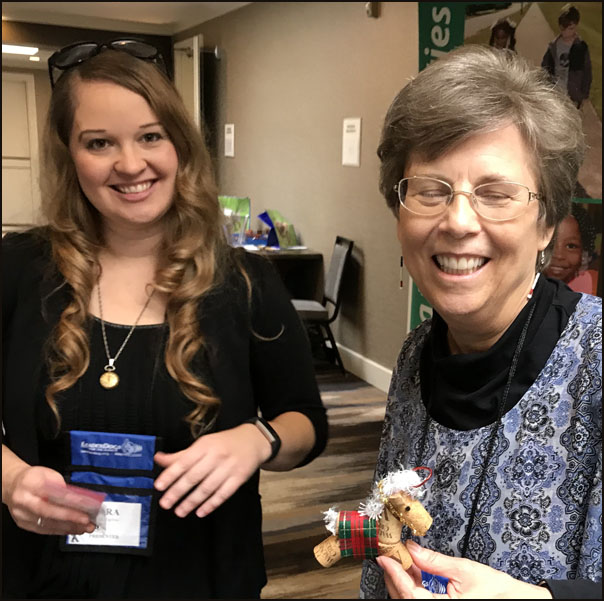
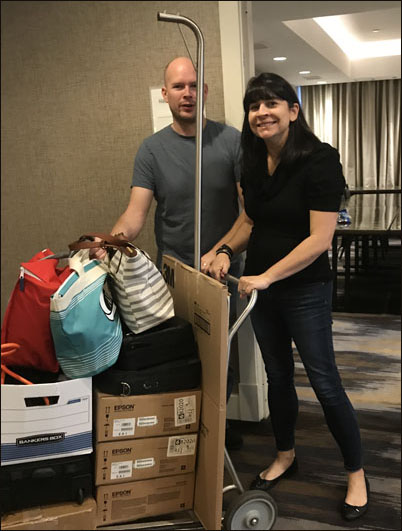
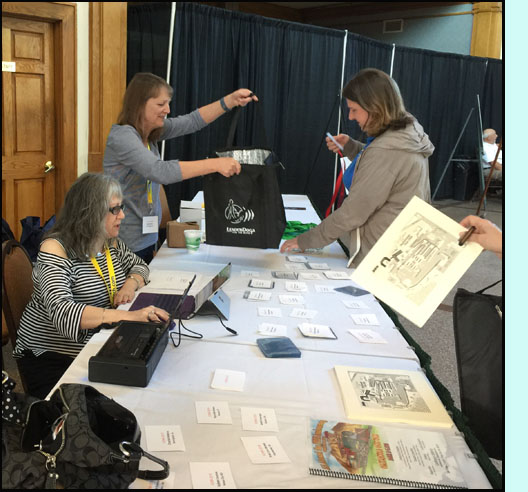
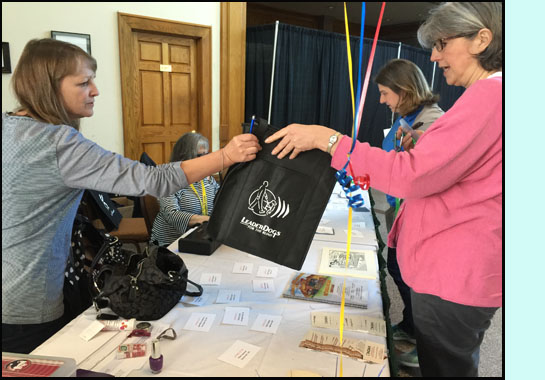
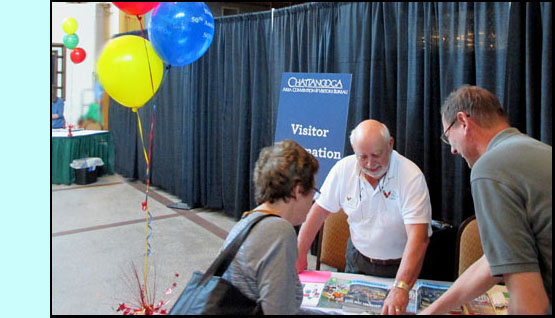

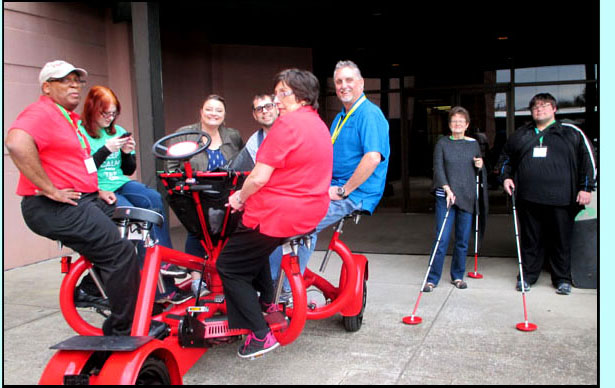 [left] Two innovations meet -- the 7-person
[left] Two innovations meet -- the 7-person 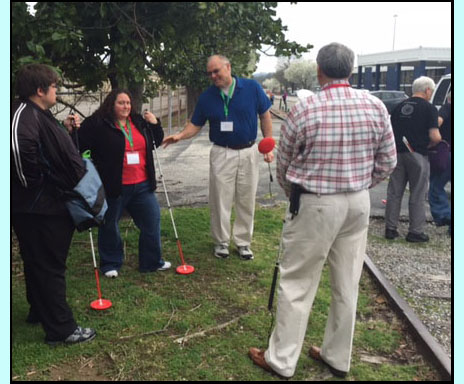
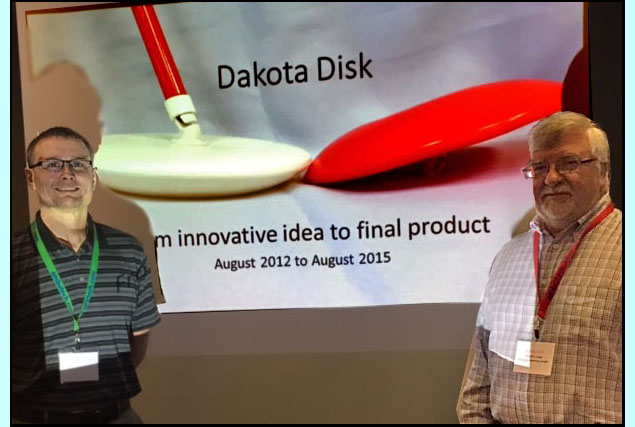
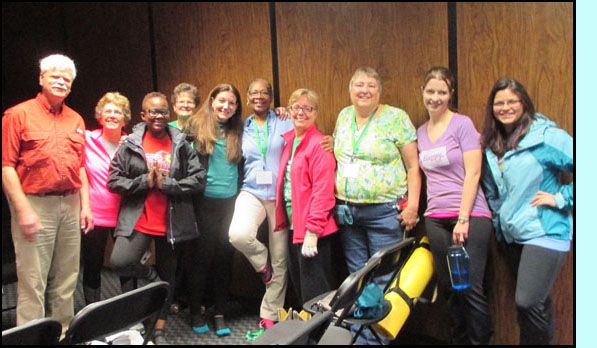
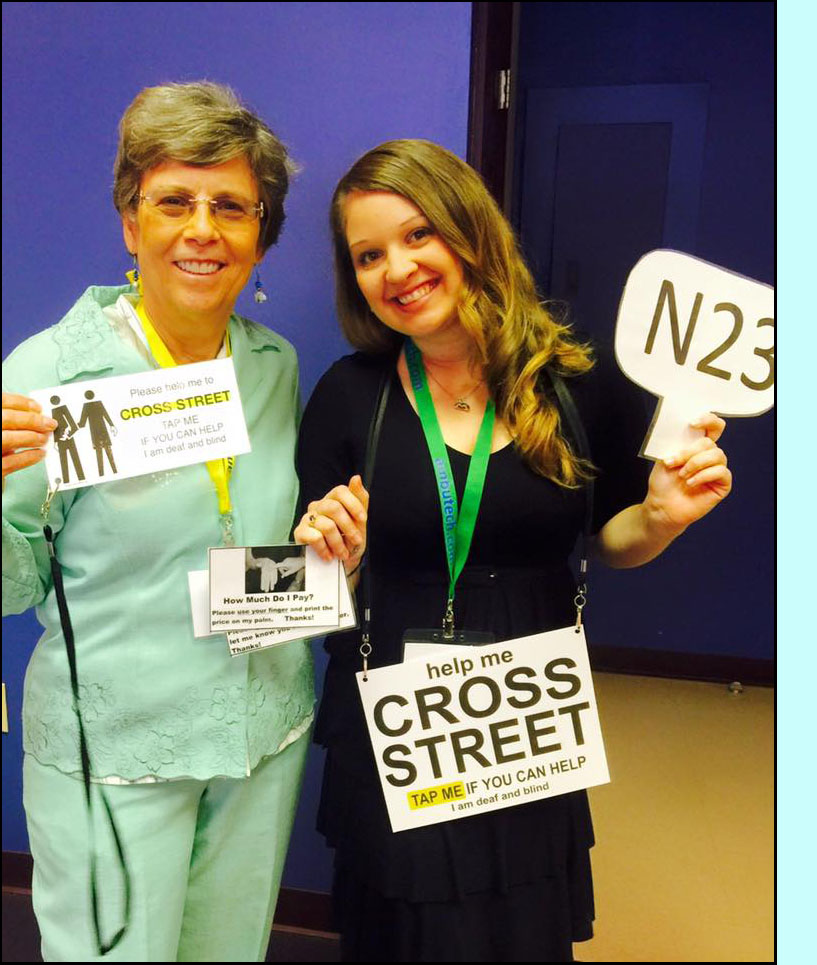


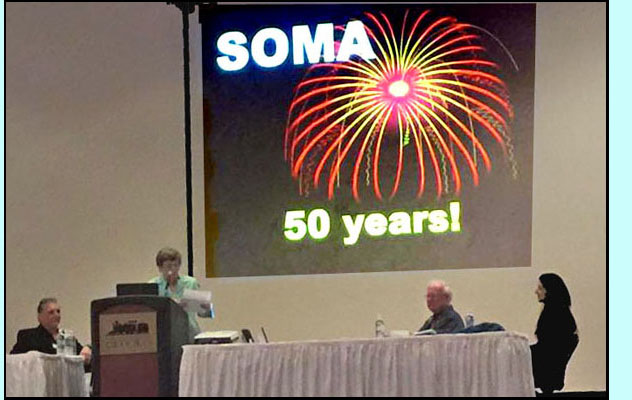
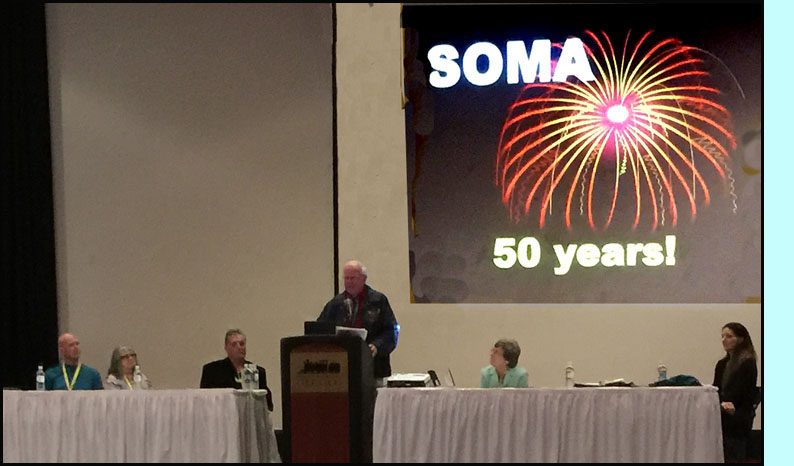 Dona Sauerburger led the SOMA Celebration, starting by thanking Kathy Yale for researching the history.
Dona Sauerburger led the SOMA Celebration, starting by thanking Kathy Yale for researching the history.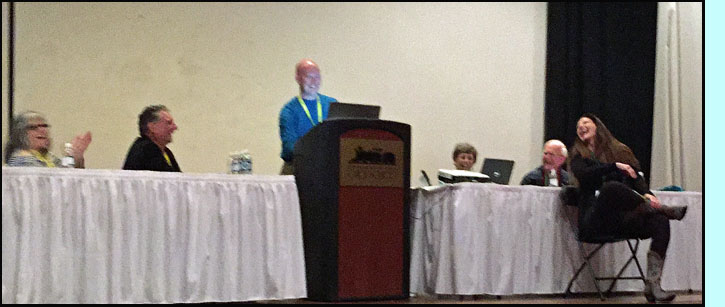
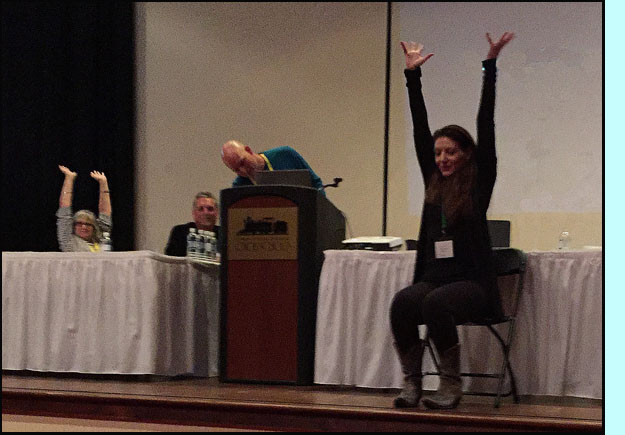
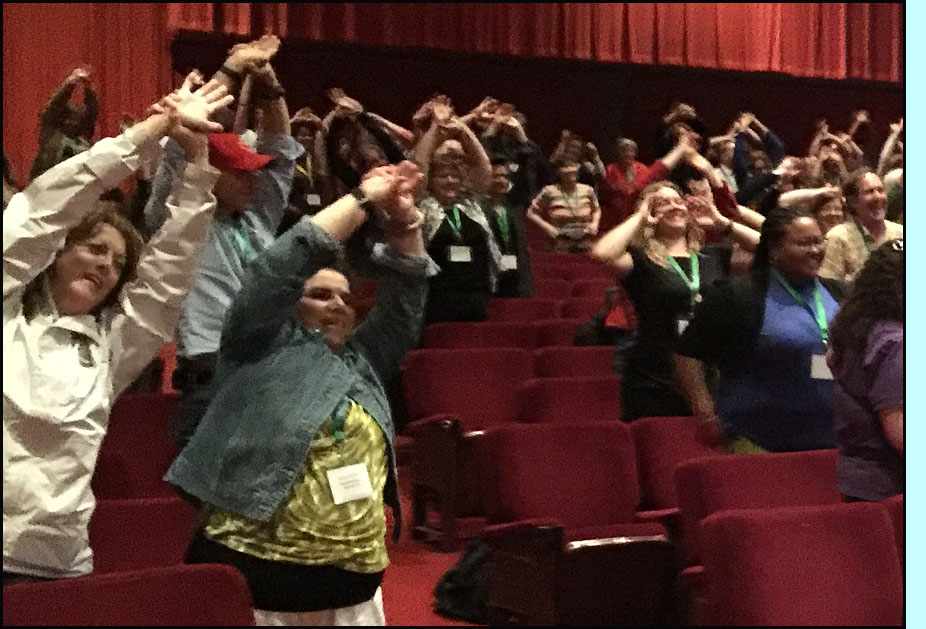
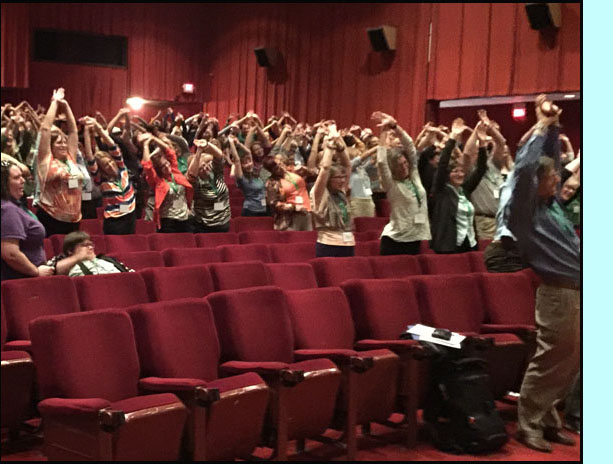


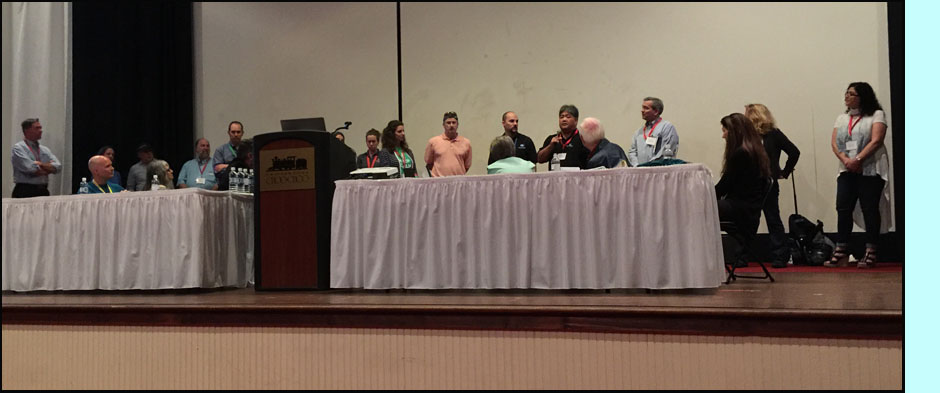
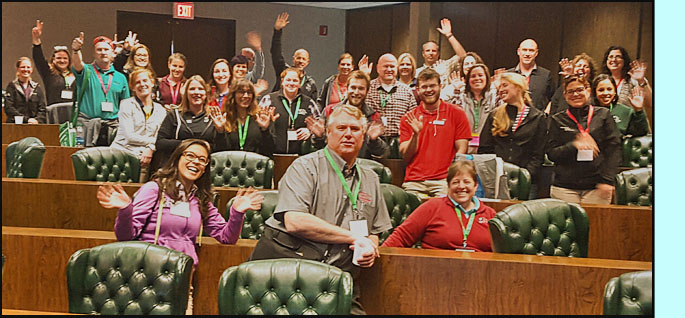
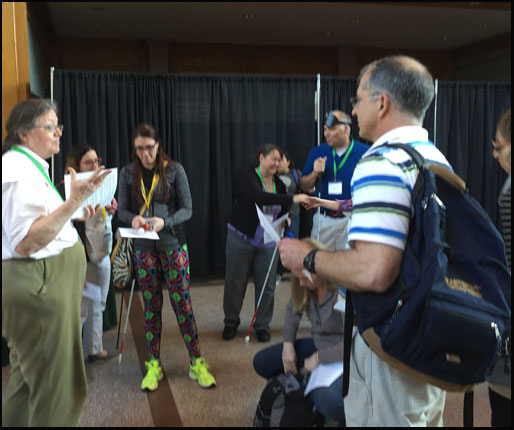
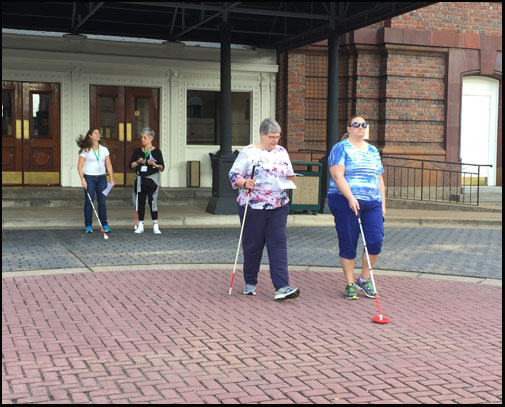
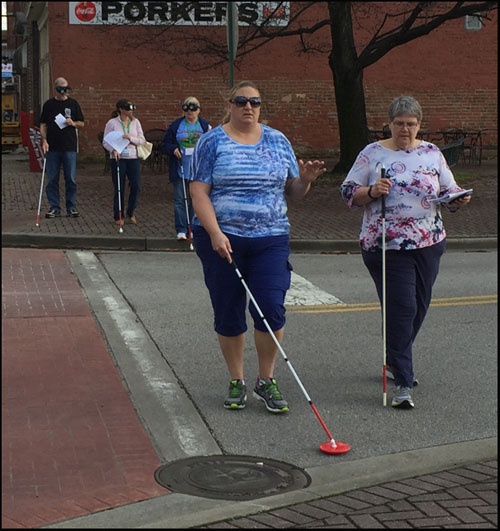
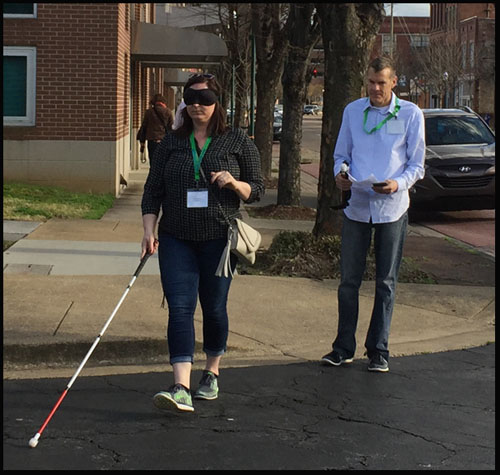
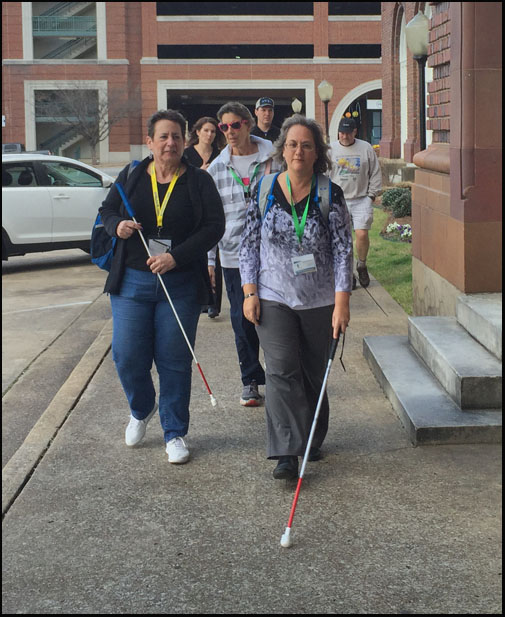
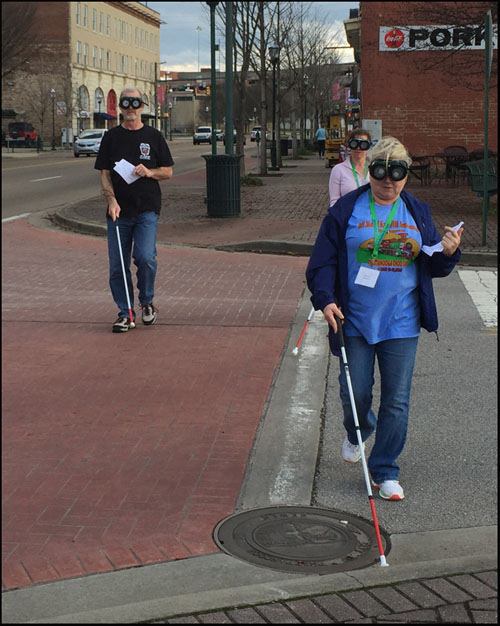
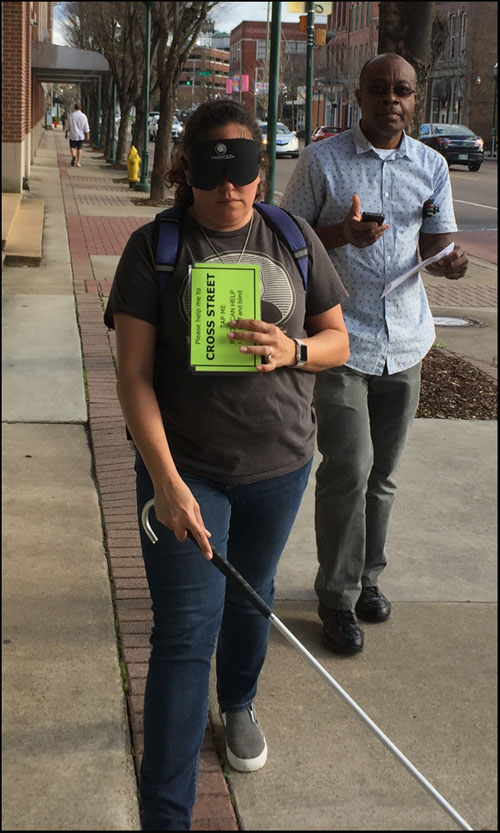
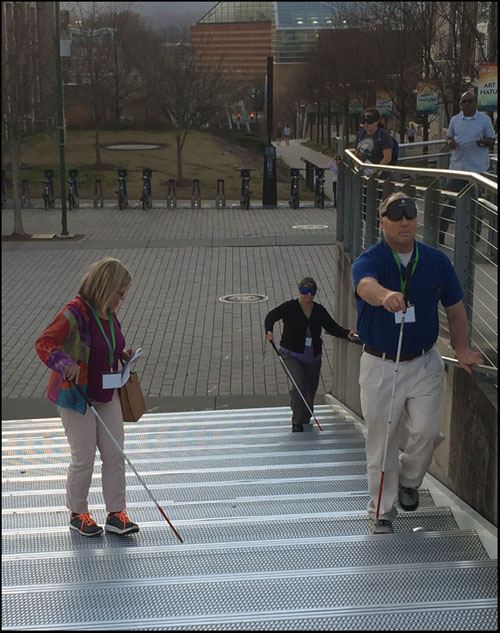
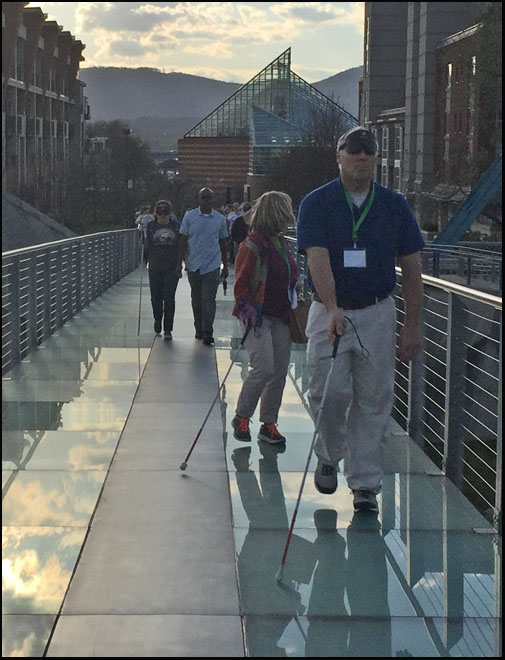
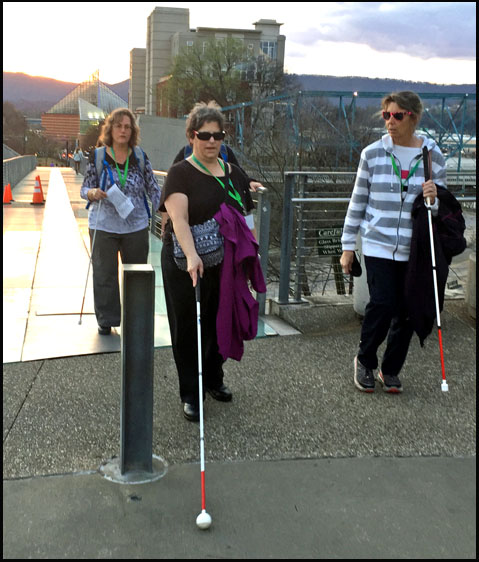
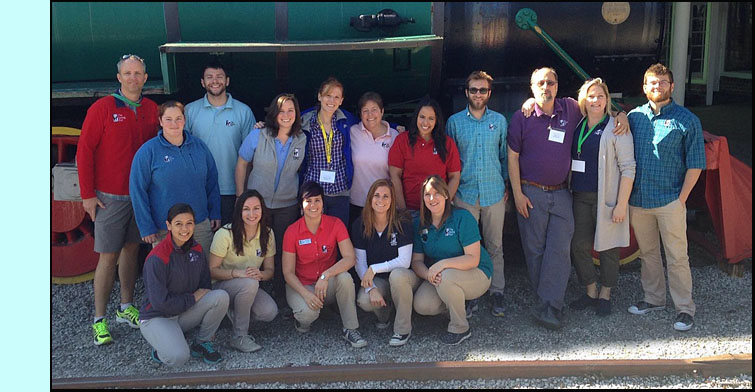
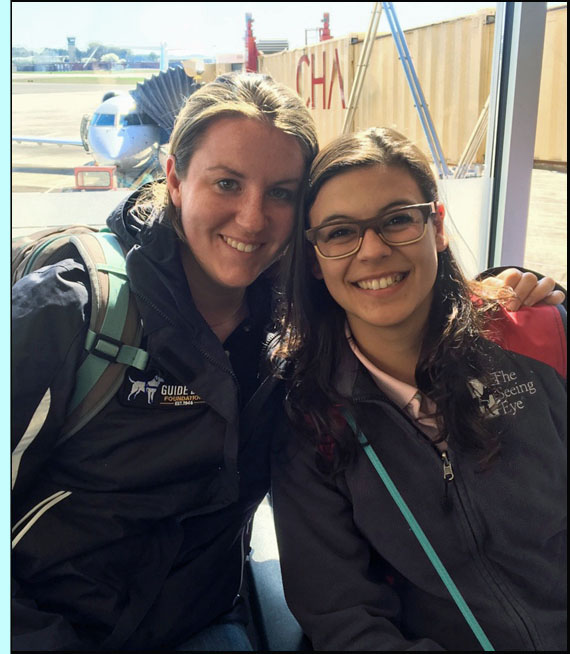
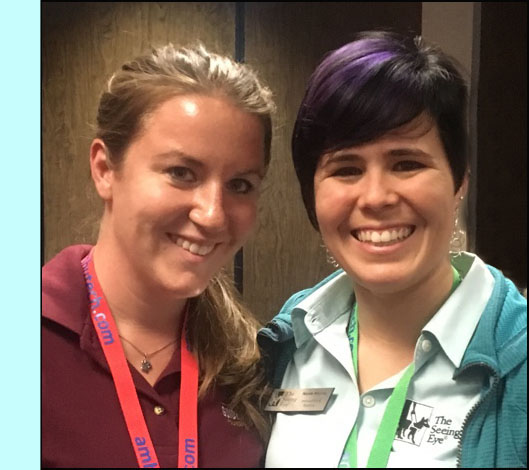 Reuniting with old friends and making new ones was one of the biggest benefits of SOMA!
If you have pictures of you and your friends at the conference, send them in to
Reuniting with old friends and making new ones was one of the biggest benefits of SOMA!
If you have pictures of you and your friends at the conference, send them in to 